
Universe Today
Space and astronomy news


How Long Does it Take Sunlight to Reach the Earth?
Here’s a question… how long does it take sunlight to reach Earth? This sounds like a strange question, but think about it. Sunlight travels at the speed of light. Photons emitted from the surface of the Sun need to travel across the vacuum of space to reach our eyes.
The short answer is that it takes sunlight an average of 8 minutes and 20 seconds to travel from the Sun to the Earth.
If the Sun suddenly disappeared from the Universe (not that this could actually happen, don’t panic), it would take a little more than 8 minutes before you realized it was time to put on a sweater.
Here’s the math. We orbit the Sun at a distance of about 150 million km. Light moves at 300,000 kilometers/second. Divide these and you get 500 seconds, or 8 minutes and 20 seconds.
This is an average number. Remember, the Earth follows an elliptical orbit around the Sun, ranging from 147 million to 152 million km. At its closest point, sunlight only takes 490 seconds to reach Earth. And then at the most distant point, it takes 507 seconds for sunlight to make the journey.
But the story of light gets even more interesting, when you think about the journey light needs to make inside the Sun.
You probably know that photons are created by fusion reactions inside the Sun’s core. They start off as gamma radiation and then are emitted and absorbed countless times in the Sun’s radiative zone, wandering around inside the massive star before they finally reach the surface.
What you probably don’t know, is that these photons striking your eyeballs were ACTUALLY created tens of thousands of years ago and it took that long for them to be emitted by the sun.
Once they escaped the surface, it was only a short 8 minutes for those photons to cross the vast distance from the Sun to the Earth
As you look outward into space, you’re actually looking backwards in time.
The light you see from your computer is nanoseconds old. The light reflected from the surface of the Moon takes only a second to reach Earth. The Sun is more than 8 light-minutes away. And so, if the light from the nearest star (Alpha Centauri) takes more than 4 years to reach us, we’re seeing that star 4 years in the past.
There are galaxies millions of light-years away, which means the light we’re seeing left the surface of those stars millions of years ago. For example, the galaxy M109 is located about 83.5 million light-years away.
If aliens lived in those galaxies, and had strong enough telescopes, they would see the Earth as it looked in the past. They might even see dinosaurs walking on the surface.
We have written many articles about the Sun for Universe Today. Here’s an article about the color of the Sun , and here are some interesting facts about the Sun .
If you’d like more info on the Sun, check out NASA’s Solar System Exploration Guide on the Sun , and here’s a link to the SOHO mission homepage , which has the latest images from the Sun.
We’ve also recorded an episode of Astronomy Cast all about the Sun. Listen here, Episode 30: The Sun, Spots and All .
Source: NASA
Share this:
- Click to share on Facebook (Opens in new window)
- Click to share on Twitter (Opens in new window)
- Click to share on Reddit (Opens in new window)
share this!
April 15, 2013
How long does it take sunlight to reach the Earth?
by Fraser Cain, Universe Today
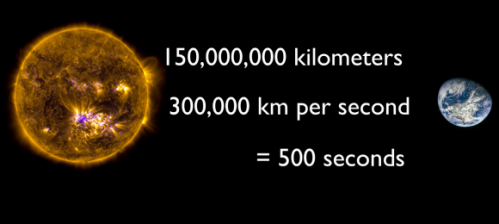
Here's a question… how long does it take sunlight to reach Earth? This sounds like a strange question, but think about it. Sunlight travels at the speed of light. Photons emitted from the surface of the Sun need to travel across the vacuum of space to reach our eyes.
The short answer is that it takes sunlight an average of 8 minutes and 20 seconds to travel from the Sun to the Earth.
If the Sun suddenly disappeared from the Universe (not that this could actually happen, don't panic), it would take a little more than 8 minutes before you realized it was time to put on a sweater.
Here's the math. We orbit the Sun at a distance of about 150 million km. Light moves at 300,000 kilometers/second. Divide these and you get 500 seconds, or 8 minutes and 20 seconds.
This is an average number. Remember, the Earth follows an elliptical orbit around the Sun, ranging from 147 million to 152 million km. At its closest point, sunlight only takes 490 seconds to reach Earth. And then at the most distant point, it takes 507 seconds for sunlight to make the journey.
But the story of light gets even more interesting, when you think about the journey light needs to make inside the Sun.
You probably know that photons are created by fusion reactions inside the Sun's core. They start off as gamma radiation and then are emitted and absorbed countless times in the Sun's radiative zone, wandering around inside the massive star before they finally reach the surface .
What you probably don't know, is that these photons striking your eyeballs were ACTUALLY created tens of thousands of years ago and it took that long for them to be emitted by the sun.
Once they escaped the surface, it was only a short 8 minutes for those photons to cross the vast distance from the Sun to the Earth
As you look outward into space, you're actually looking backwards in time.
The light you see from your computer is nanoseconds old. The light reflected from the surface of the Moon takes only a second to reach Earth. The Sun is more than 8 light-minutes away. And so, if the light from the nearest star (Alpha Centauri) takes more than 4 years to reach us, we're seeing that star 4 years in the past.
There are galaxies millions of light-years away, which means the light we're seeing left the surface of those stars millions of years ago. For example, the galaxy M109 is located about 83.5 million light-years away.
If aliens lived in those galaxies, and had strong enough telescopes, they would see the Earth as it looked in the past. They might even see dinosaurs walking on the surface.
Source: Universe Today
Explore further
Feedback to editors

Researchers find oldest undisputed evidence of Earth's magnetic field
5 minutes ago

Modeling broader effects of wildfires in Siberia

Scientists at the MAJORANA Collaboration look for rule-violating electrons
55 minutes ago

Lunar landforms indicate geologically recent seismic activity on the moon

Japan's moon lander wasn't built to survive a weekslong lunar night. It's still going after 3
4 hours ago

Bioluminescence first evolved in animals at least 540 million years ago, pushing back previous oldest dated example
13 hours ago

Star bars show universe's early galaxies evolved much faster than previously thought

Scientists study lipids cell by cell, making new cancer research possible
14 hours ago

Squids' birthday influences mating: Male spear squids shown to become 'sneakers' or 'consorts' depending on birth date

Study finds rekindling old friendships as scary as making new ones
16 hours ago
Relevant PhysicsForums posts
Our beautiful universe - photos and videos, what did i capture.
18 hours ago
'Devil' comet visible tonight 21.04.24
Apr 21, 2024
Solar Activity and Space Weather Update thread
Apr 19, 2024
Will we ever communicate with extraterrestial life in a reasonable time frame?
Orientation of the earth, sun and solar system in the milky way.
Apr 18, 2024
More from Astronomy and Astrophysics
Related Stories

SDO's crazy-looking Sun due to syzygy
Apr 4, 2011

Earth's orbit creates more than a leap year
Feb 8, 2008

Sun emit a mid-level flare
Nov 13, 2012

A cool discovery about the Sun's next-door twin
Feb 20, 2013

Fear no supernova
Dec 16, 2011

Prepare for a total solar eclipse
Recommended for you.

NASA's Voyager 1 resumes sending engineering updates to Earth
Apr 22, 2024

Simulated microgravity affects sleep and physiological rhythms, study finds

'Tube map' around planets and moons made possible by knot theory
Apr 17, 2024

NASA's Ingenuity Mars helicopter team says goodbye—for now

NASA confirms mystery object that crashed through roof of Florida home came from space station
Apr 16, 2024
Let us know if there is a problem with our content
Use this form if you have come across a typo, inaccuracy or would like to send an edit request for the content on this page. For general inquiries, please use our contact form . For general feedback, use the public comments section below (please adhere to guidelines ).
Please select the most appropriate category to facilitate processing of your request
Thank you for taking time to provide your feedback to the editors.
Your feedback is important to us. However, we do not guarantee individual replies due to the high volume of messages.
E-mail the story
Your email address is used only to let the recipient know who sent the email. Neither your address nor the recipient's address will be used for any other purpose. The information you enter will appear in your e-mail message and is not retained by Phys.org in any form.
Newsletter sign up
Get weekly and/or daily updates delivered to your inbox. You can unsubscribe at any time and we'll never share your details to third parties.
More information Privacy policy
Donate and enjoy an ad-free experience
We keep our content available to everyone. Consider supporting Science X's mission by getting a premium account.
E-mail newsletter
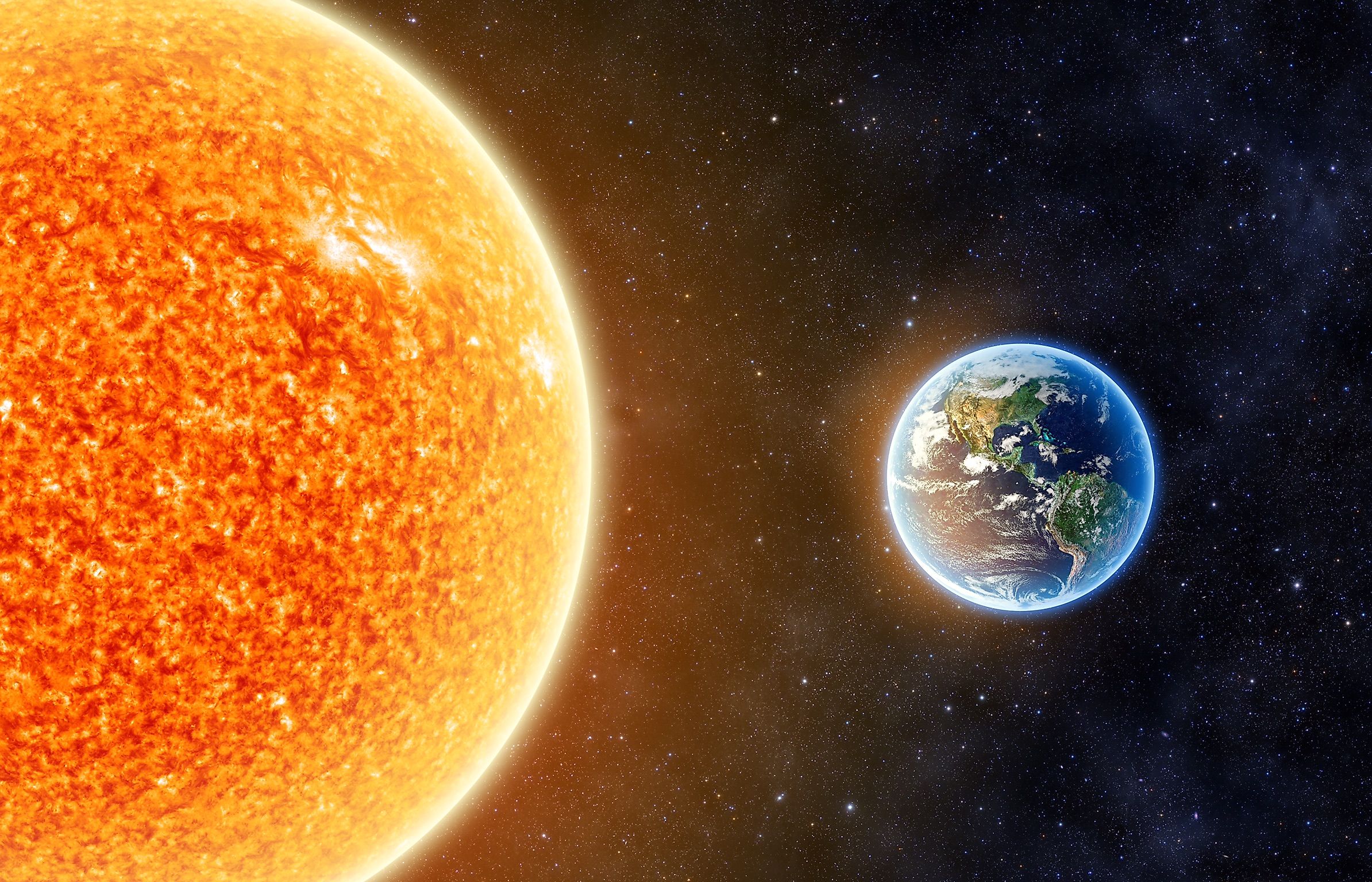
- How Long Does It Take Sunlight To Reach Earth?
The sun is the largest, most massive object in the solar system , and it is also the primary source of light for all the planets . Everyday we feel the warmth of the sun’s light, and without it, life on Earth would not exist. Interestingly, light from the sun does not reach our planet instantaneously. Rather, since the speed of light is a finite number and the sun is located about 93-million miles (150-million kilometres) away, it takes about 8-minutes for light from the sun to reach Earth.
Speed Of Light
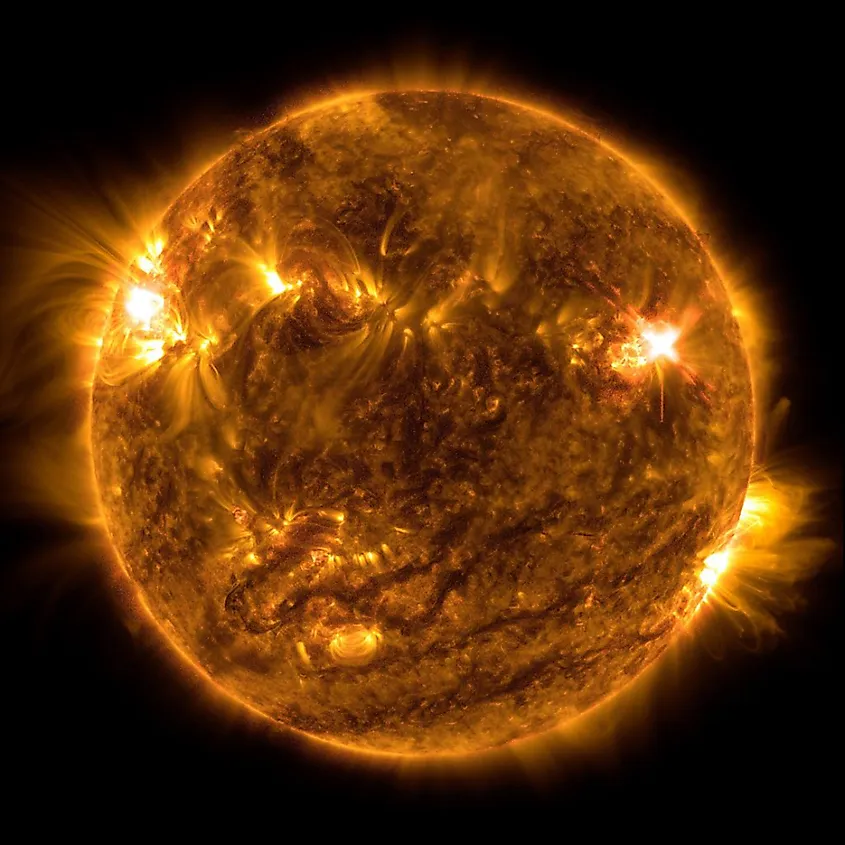
Light is the fastest known thing in the universe, and the speed of light represents a kind of cosmic speed limit that, as far as the laws of nature suggest, cannot be surpassed. The speed of light is approximately 186,000-miles per second (300,000-kilometres per second). That is extremely fast, yet it is still a finite number, and so the further away a source of light is, the longer it takes for that light to reach our eyes.
Distance To The Sun
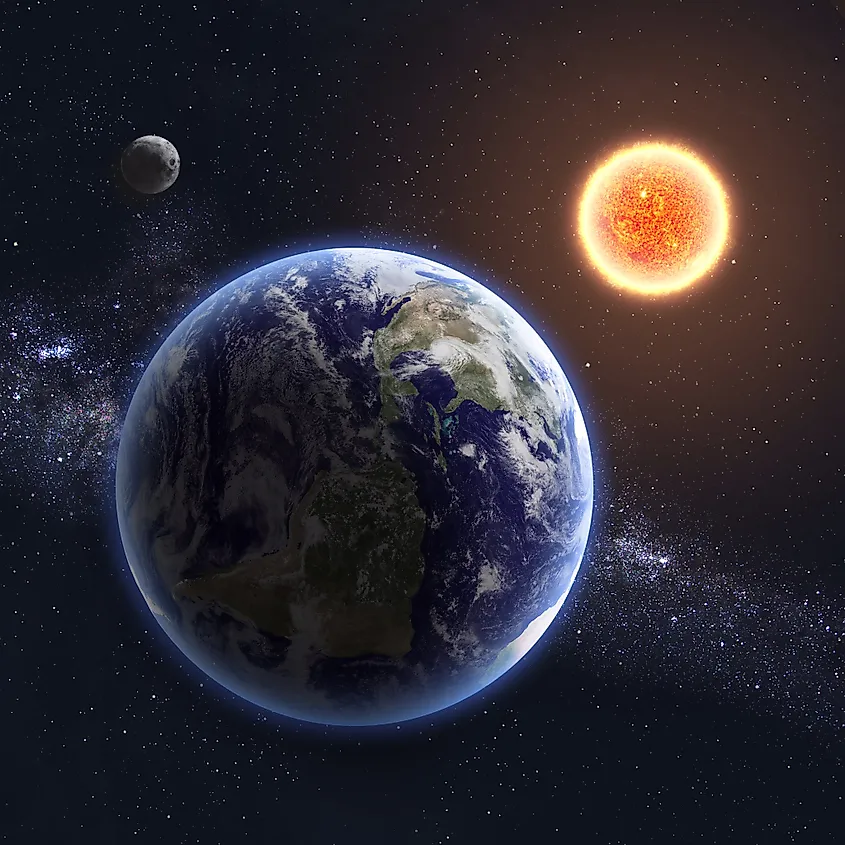
The Earth orbits the sun at an average distance of 93-million miles (150-million kilometres). At this distance, there is a noticeable delay in when light emitted by the sun reaches our world. In fact, just by knowing the speed of light and the distance between the sun and Earth, you can calculate how long it takes for that light to reach us quite easily. You simply divide distance by speed and you get time. In this case, you divide 93-million miles by 186,000-miles per second to get 500-seconds, which can be converted to minutes by multiplying 500-seconds by 60, which gives you 8.3-minutes. Thus, it takes just a little over 8-minutes for light from the sun to reach the Earth. This also means that we never see the sun as it currently exists. Rather, we always see the sun as it was 8-minutes ago. For example, if the sun were to suddenly disappear, we would not notice for a full 8-minutes.
What About The Other Planets?
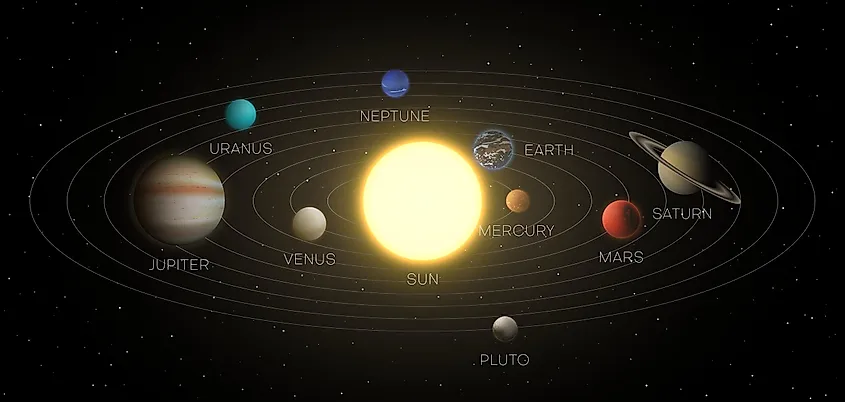
Since every planet in the solar system orbits the sun at a different distance, the amount of time it takes for sunlight to reach each of them is also different. The closer a planet is to the sun, the less time it takes. For example, Mercury is the closest planet to the sun and it takes about 3.2-minutes for sunlight to reach it. For Venus it’s about 6-minutes, and for Mars it takes 12.6-minutes. Thus, it takes less than 13-minutes for sunlight to reach all of the inner planets in our solar system. However, it takes much longer for sunlight to reach the gas giants. It takes 43.2-minutes for sunlight to reach Jupiter , and 79.3-minutes for it to reach Saturn . For Uranus , it takes 159.6-minutes, and for Neptune , it takes just over 4-hours.
Time it Takes for Sunlight to Reach Each Planet
More in science.
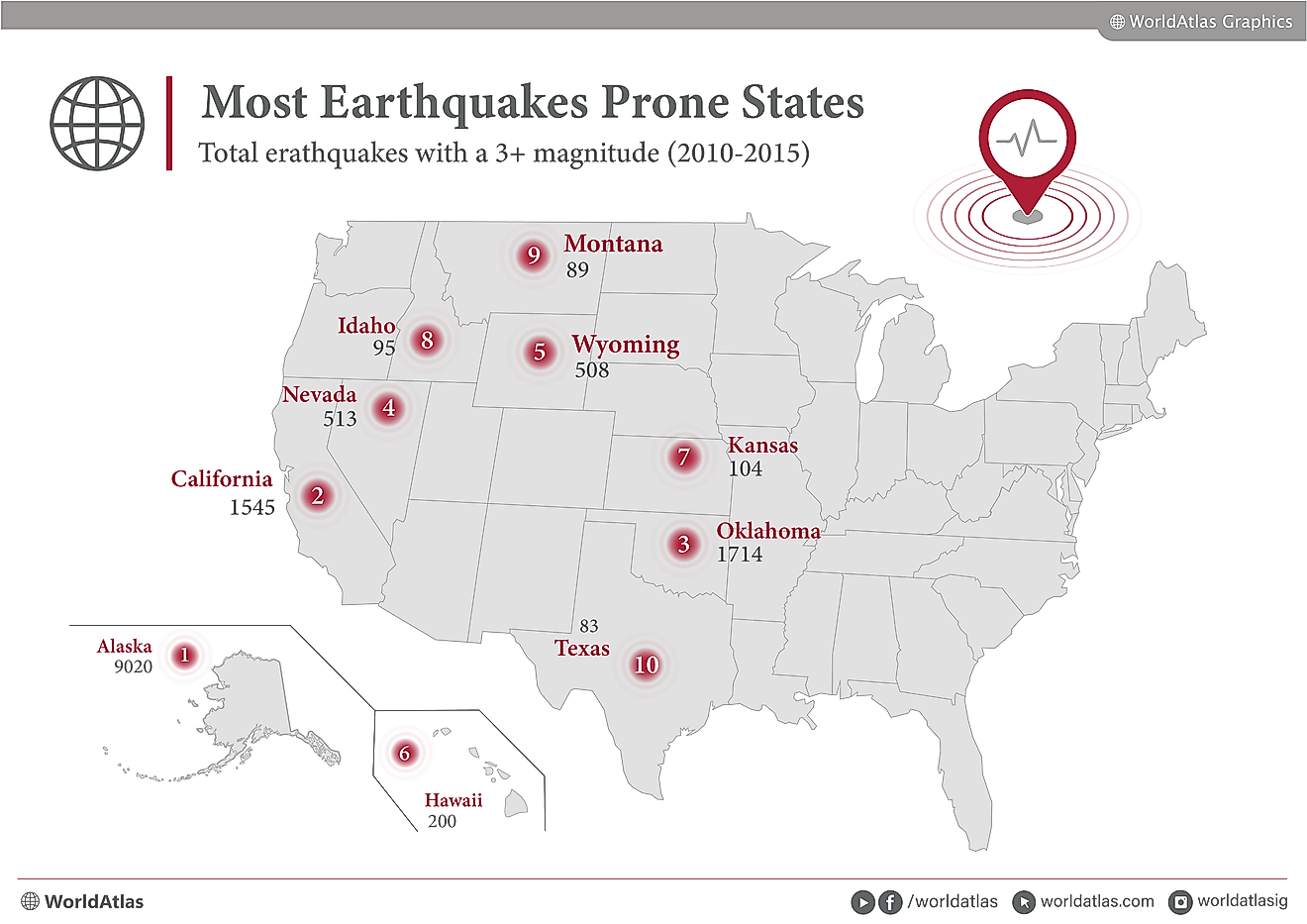
Where Do Most Earthquakes Occur In The US?
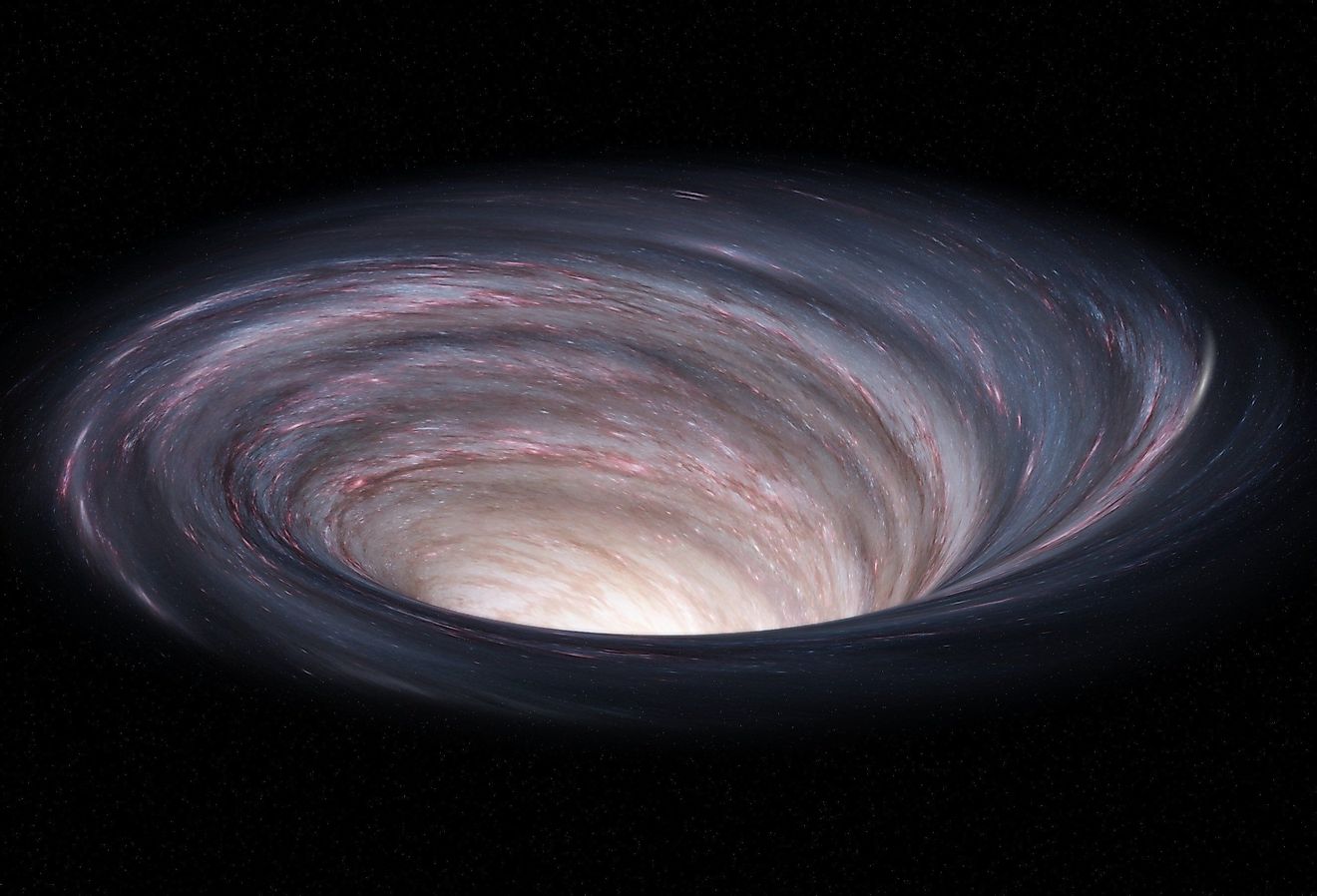
Black Holes Might be Defects in Space and Time

How Are Earthquakes Measured Using The Richter Scale?

How Many New Species Are Discovered Every Year?
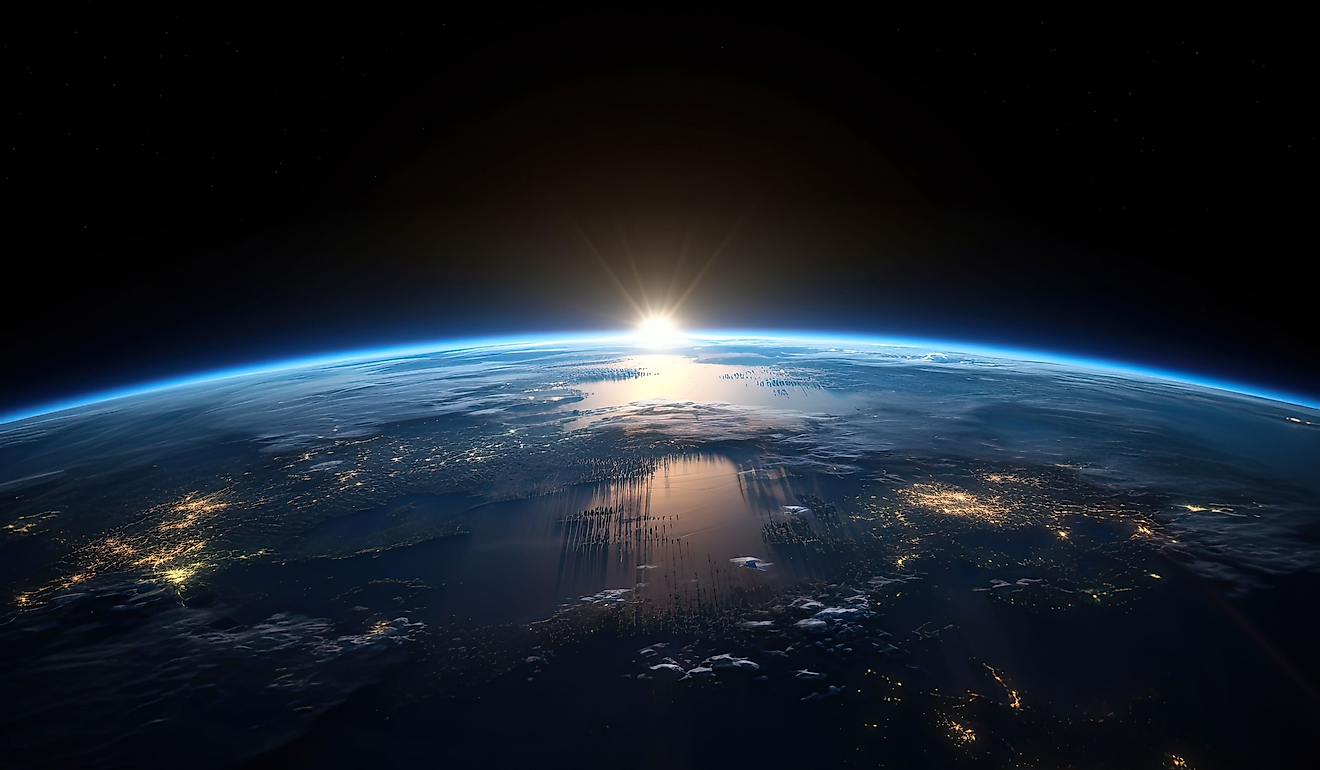
Where Does The Sun Rise And Set?
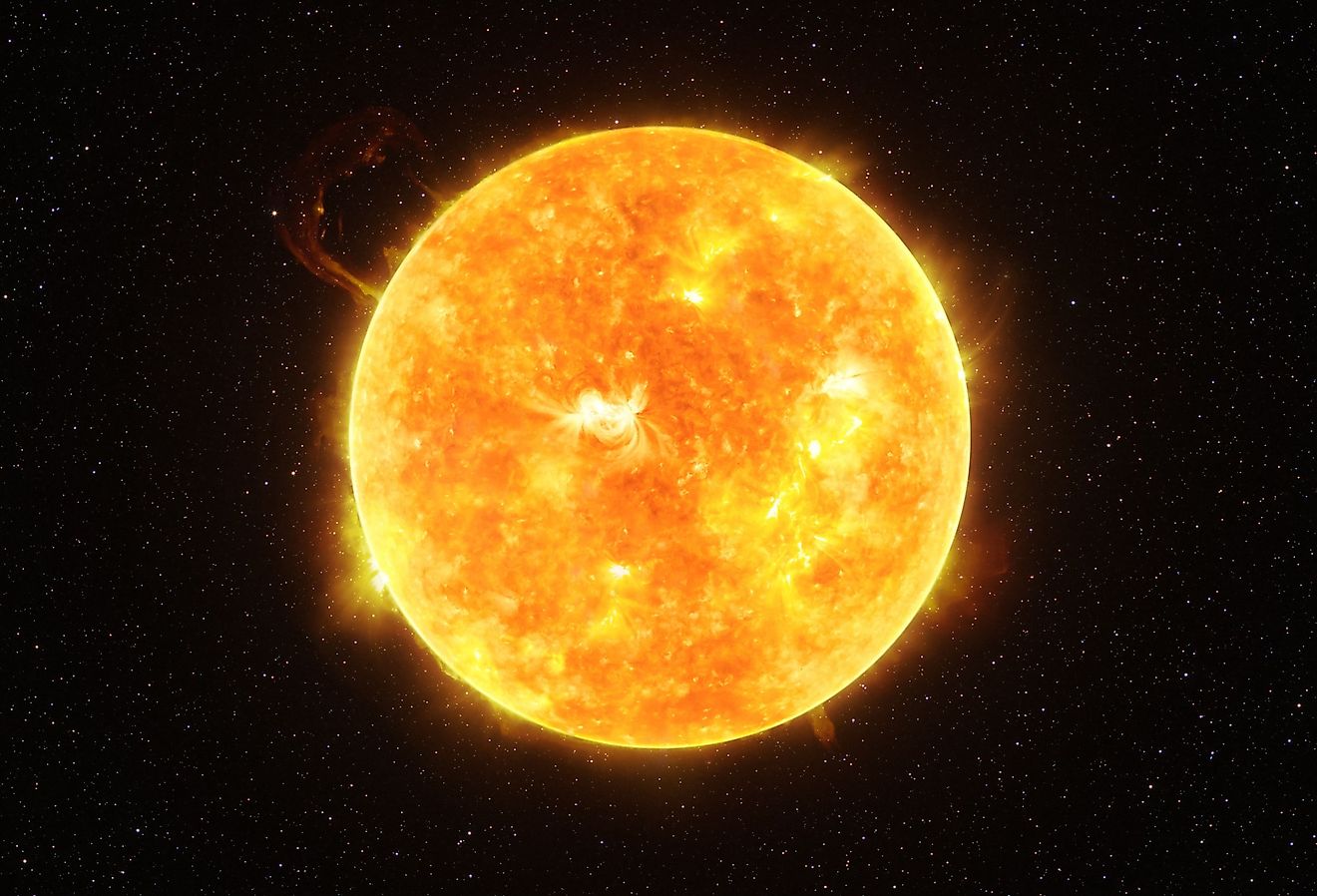
How Hot Is The Sun?
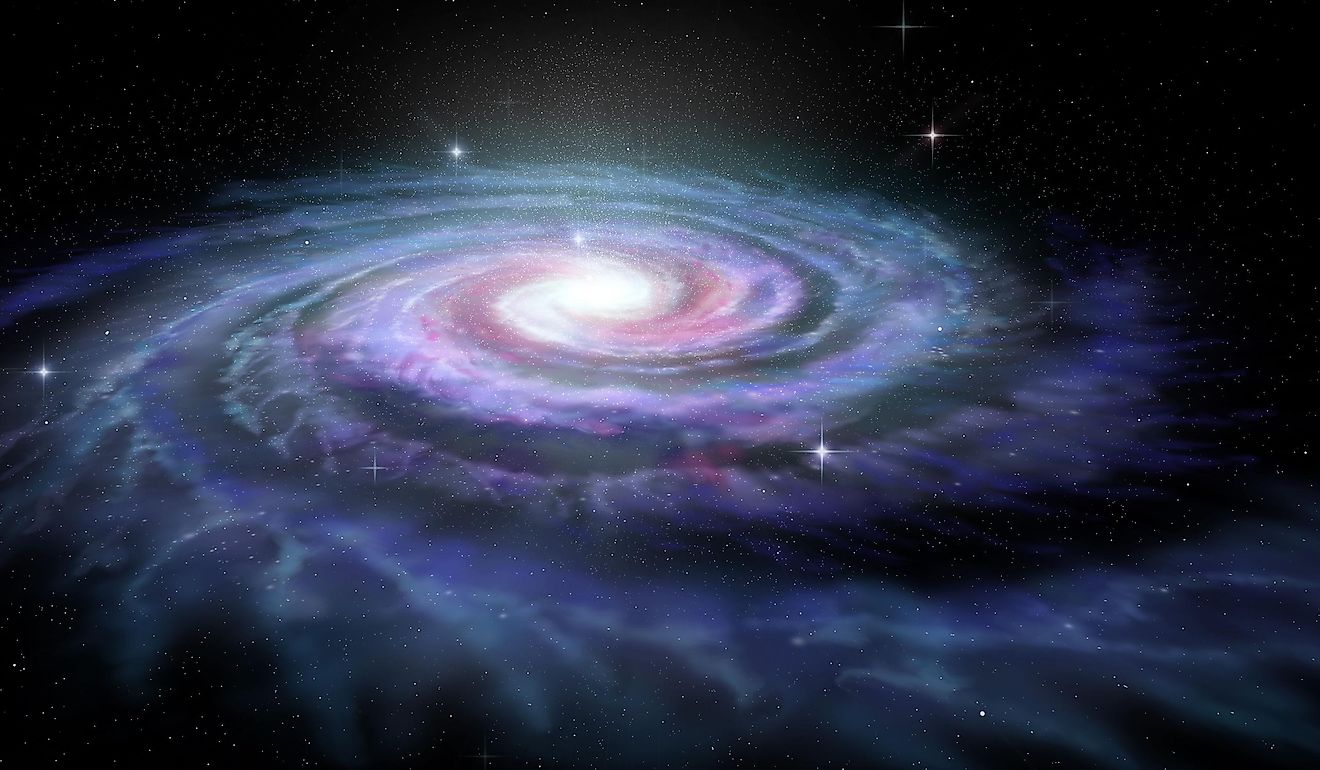
How Many Planets Are In The Milky Way?
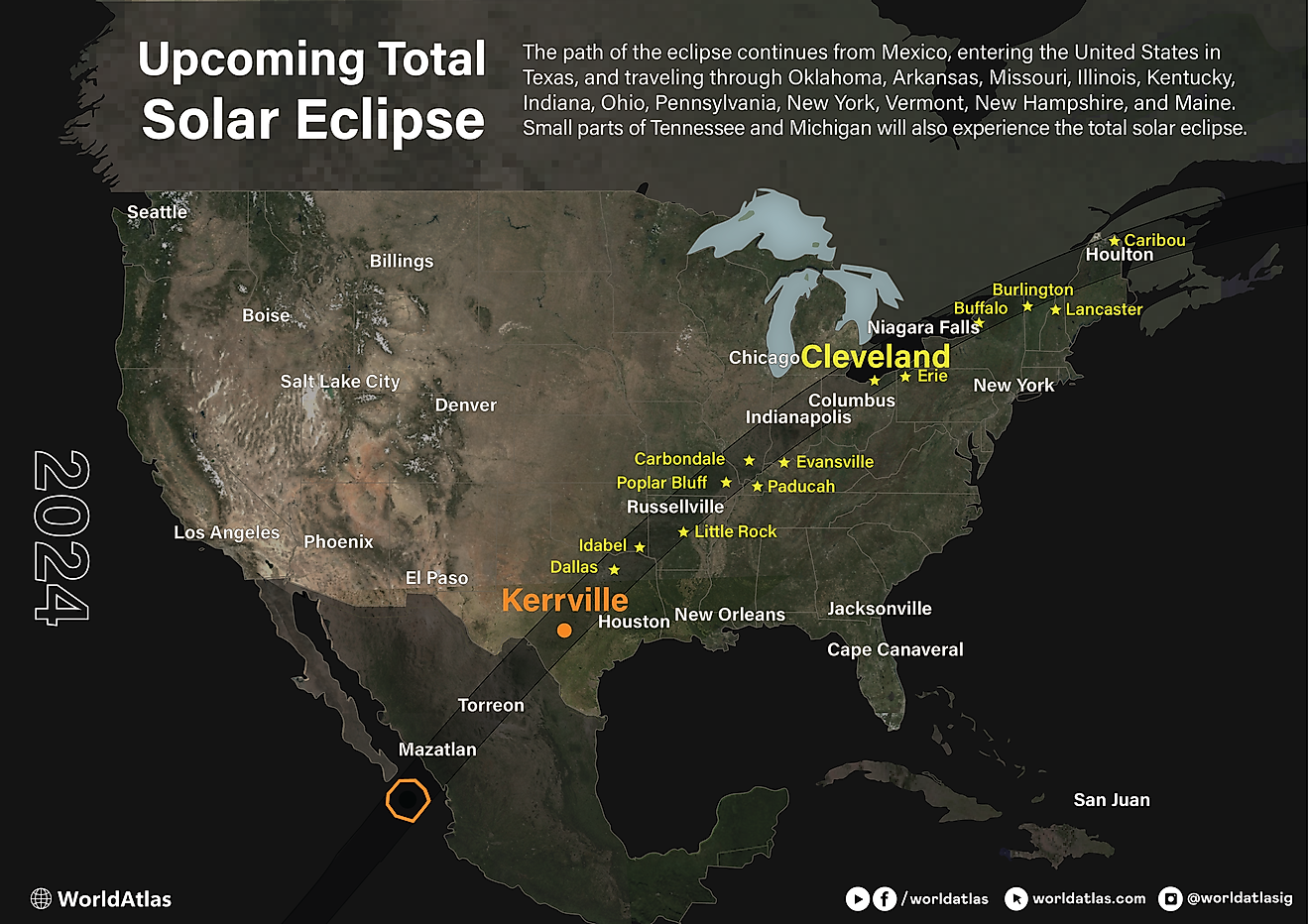
The Upcoming 2024 Total Eclipse

The Race Against Time: Understanding How Long it Takes for Light to Reach Earth
Last Updated: March 7, 2023
The speed of light is incredibly fast and considered unreachable by technology or anything other than light. And yet, even if we could travel at the speed of light, it would take many lifetimes, if at all, to reach many destinations. Let’s explore the speed of light and how we use it to study the universe, including how we look into the past in the night sky.
The speed of light
When someone turns on a light, how long does it take for someone else to see it? When the first ray of sunlight breaches the horizon, how long has it been since it was emitted from the Sun?
Greek philosophers argued whether light had a rate of travel (since it could indeed travel) or if it was simply instantaneous, but they didn’t have any way to prove either hypothesis. Galileo attempted to measure the speed of light in the mid-1600s by having two people stand on hills less than a mile apart with shielded lanterns. Person A would uncover their lantern and when Person B saw the flash, he uncovered his too. Less than a mile was not nearly far enough to measure an accurate speed, but, he did conclude that light traveled at least ten times faster than the speed of sound (343 m/s or 1,087 ft/sec).
In the 1670s, Danish astronomer Ole Rømer was studying the exact time of the eclipses of Jupiter’s moon Io to create an astronomical calendar for sailors, but noticed the eclipses didn’t follow his calculations. When Jupiter and Earth were moving away from each other, the eclipses lagged. When the planets were moving toward each other, the time eclipse arrived early. When they were at their closest or furthest distance, the eclipse arrived right on schedule. From this data, he was able to infer that light had a measurable rate at which it traveled. He was able to estimate the speed of light from his data at about 124,000 miles per second (200,000 km/s). Since scientists had not known the exact size of the solar system and the Earth’s orbit at that time, it was not correct, but it was the best estimate at the time and his findings changed astronomy.
Other scientists, began analyzing the speed of light using precisely aligned mirrors that reflected light over great distances to determine how long it took for light to travel that far. English physicist James Bradley, French physicist Hippolyte Fizeau, and French physicist Leon Foucault each measured more and more precisely, getting to within 1% and then about 1,000 miles per second (1,609 km/s) of the speed of light.
Albert A. Michelson dedicated himself to the speed of light and light in general, creating the new best estimate of 186,355 miles per second (299,910 km/s) in 1879 and then fine-tuning it not just once, but twice with his final experiment shortly before his death in 1931 resulting in just under today’s accepted value of the speed of light. He also proved that light did not operate as a wave (like sound) as was the prevailing theory because that would require a medium (generally referred to as a luminiferous aether or simply aether to travel through space) and he found no evidence of any such aether meaning light can and does travel through the vacuum of space, earning him a Nobel Prize.
With more precise instruments in better-controlled environments, we have been able to confirm that the speed of light is 299,792,458 meters (983,571,056 feet) per second which is 299,792 kilometers per second or about 186,282 miles per second. That’s fast enough to travel around the equator about 7.5 times in one second.
The speed of light is a universal constant known in equations as “c,” or light speed. The speed of light is constant because light acts as both a particle and a wave, meaning it does not need a medium to travel through. In fact, light’s speed from either a stationary object or a moving object is always the same.
Light traveling through a vacuum (or imperfect vacuum such as space) travels at the constant speed of light, but light that travels through a medium bends when it comes in contact with particles, slowing it down. The measure of how much a material slows down light is known as its refractive index. Earth’s atmosphere, for instance, slows down light by about three ten-thousandths of the speed of light whereas light traveling through a diamond slows down to less than half its original speed.
Astronomy/ astrophysics is essentially the only field of study where you can’t physically be in the room with what you are studying. The only way we can study it is by observing the light that reaches us. Understanding how light behaves and travels is crucial to being able to analyze that light and data. The speed of light helps us calculate distance, size, location, and more.
In addition, the speed of light is integral in understanding the conversion of mass into energy with Einstein’s famous equation E=mc2 which explains how tiny amounts of mass can turn into massive amounts of energy. However, for an object to reach the speed of light, its mass would have to become infinite, meaning the energy needed to move the object would also become infinite which is an impossibility. (However, we have observed that the universe is expanding faster than the speed of light, which is a paradox we still do not understand). Understanding these possibilities and limitations allows us to study the universe, and create more accurate algorithms and simulations to better understand how the universe works.

The distance to other celestial objects
If you hold out your thumb at arm’s length (ideally covering something in front of you, but not necessary), close one eye, and then switch which eye is open, you will see your thumb move slightly. This is a very simple, Earth-based example of parallax, when an object’s location is displaced based on point of view. By measuring this small displacement and the distance between your eyes, you can calculate the distance to your thumb using trigonometry to find the top of the cone that engulfs the space in between.
While it may look like a two-dimensional projection above our heads, we must remember that space is three-dimensional. Stars may seem like they are right next to each other, but in reality, not only are they far apart from each other, but one is likely closer than the other and it may be the one you don’t expect. In addition, we are on a planet orbiting the Sun, meaning our location in our orbit impacts how we see stars in the night sky. Every six months, the Earth moves about 186 million miles (300 million kilometers) to the other side of the Sun, displacing its view of the universe around it. This is a relatively small amount based on the size of the universe, but enough to cause stars to perform tiny circles throughout the year, so tiny that detecting and measuring them is difficult.
The ancient Greek astronomer Hipparchus was the first to use parallax to determine the location of a celestial object: the Moon. He had a solar eclipse observed from two separate locations to calculate how far away the moon was. Mars’ distance from Earth was determined using parallax in 1672 by Giovanni Cassini and his colleague Jean Richer during simultaneous observations in Paris and French Guiana. To measure the exact location of small objects in the sky, we break up the sky into degrees. From one horizon to the opposite is 180 degrees, half of a full circle which would go around the Earth. From one horizon to the point straight above your head (the zenith) is 90 degrees. Special tools on telescopes help to measure these degrees similar to a large protractor from your school days. You can also estimate using a closed fist held out at arm’s length being about 10 degrees. A degree is about the width of your pinky held at arm’s length. A degree is then broken into 60 arcminutes and each arc minute is broken into 60 arcseconds. Arcminutes and arcseconds definitely need special tools to measure accurately. Even the closest stars have a shift of less than an arcsecond when analyzing parallax.
Simultaneous observations from 2 locations on opposite sides of the world worked for objects within our solar system, but for objects outside of the solar system, like stars, we needed to factor in the orbit of Earth, taking measurements from opposite ends. Friedrich Bessel in 1838 then used the method to determine the distance from star 61 Cygni, in the Cygnus constellation, from Earth, springboarding the long process of creating a three-dimensional map of the night sky which took decades and improvements in the telescope to make the process easier.
Today, we also use parallax by comparing earth observations with observations from probes and missions out in the solar system such as New Horizons, providing even more distance to calculate even more specific measurements. Even using parallax and our updated technology, we eventually find that stars are too far away to calculate the minute changes. Instead, we build on the parallax method using stars that are known as “standard candles” for comparison in intrinsic brightness to determine distance. Using parallax and similar methods we can determine how far away a star is. A light-year is the distance light can travel in 1 year or about 6 trillion miles (10 trillion kilometers) and is the main measurement we use for calculating the distance to other stars. If we took the circumference of the Earth, laid it out on a straight line, and multiplied it by 7.5, we would get one light second. We would then need 31.6 million of those light-second lines to create the distance of a light-year.
Light from the sun takes about 8 minutes to reach Earth meaning our Sun is 8 light-minutes away from us. The closest stars to us are the Alpha Centauri triple-star system which is about 4.37 light-years away, meaning if we could travel at the speed of light (which again is impossible) it would take us just under 4 years and 4.5 months to travel the distance. The closest of these stars is Proxima Centauri which is about 4.24 lightyears away from us, meaning just under 4 years and three months at the speed of light. Remember that a light-year is about 6 trillion miles meaning they are over 26 trillion miles or 43.7 trillion km away. Voyager 1 would take over 73,000 years to arrive at Proxima Centauri.
Another important factor in this section before we move on is redshift. The frequency of light or sound emitted by a moving object changes based on if it is moving closer to the observer or farther away. Objects moving away from the observer shift towards “redder”, longer wavelengths, which is where we get the term redshift. If they are moving toward us, the frequencies shift to shorter, bluer frequencies. This is also known as the Doppler Effect, especially with sound waves, which you can hear as the change in tone when a siren passes by you. Understanding redshift helps us to better calculate the distances and locations of celestial objects, which are always moving. This was first discovered when Ole Rømer was studying the eclipses of Io and fundamentally changed our understanding of astronomy.

The time it takes for light to reach Earth
If we know how many lightyears away an object is, that is also how many years it would take for light from that star to reach us (and vice versa). When we are looking at stars, we are looking back in time, seeing them as they were when their light left, whether that is dozens, hundreds, millions, or hundreds of millions of years ago. Let’s explore a few famous stars to better understand their light.
The brightest star in the night sky is Sirius A in Canis Major, the Big Dog Constellation and it is 8.6 light-years away. The light we see from it is almost nine years old.
Looking at the Big Dipper in Ursa Major, most of the stars, excluding the far end of the handle and the top right of the dipper, are about 80-83 light-years away. Alkhaid and Dubhe (the two exceptions mentioned previously) sit at 104 and 123 light-years away respectively. On average, the light from the stars in the Big Dipper took about a century to reach us and we look at it as it was a hundred years ago.
But this is abnormal. Many stars within a constellation are not close by at all in reality. If we look at the Northern Cross of the Cygnus/ Swan constellation, Epsilon (ε) Cygni in the eastern end of the crossbeam is located 73 light-years from Earth, and is almost 36 times closer than Deneb, or Alpha (α) Cygni, at the head of the cross.
Betelgeuse, the bright red star in the armpit of Orion is 642.5 light-years away meaning the light we see from Betelgeuse is almost 650 years old. If there was intelligent life near Betelgeuse looking at us, they would see us as we were in the 1300s!
Some of the most distant stars in the Milky Way are known as RR Lyrae stars in the halo surrounding our galaxy over a million light-years away. The furthest stars are almost halfway to Andromeda, our sister galaxy, which is about 2.5 million light-years away. Finally, in 2022, Hubble spotted Earendel, the most distant star detected 28 billion light-years away.
When considering how bright a star is, we have to consider both how much light it is putting out and how far away it is (in addition to other factors such as what’s between us and them like clouds of gas and dust).
Apparent magnitude is how bright we see the star from Earth while absolute magnitude is how bright the star is at a standard distance of 32.6 light-years (equal to 10 parsecs, the next rung up on the distance measurements of the universe). To understand its actual luminosity or brightness, astronomers look at its color spectrum, what it’s emitting on the electromagnetic spectrum in the visible light range which correlates to temperature and therefore brightness.
Knowing the difference between the apparent magnitude and the absolute magnitude or actual brightness/ luminosity helps astronomers calculate the distance to the star. The magnitude scale was determined by Ptolemy in the 2nd century C.E. with the brightest stars receiving a magnitude of 1 and the dimmest receiving a magnitude of 6 with a 100x difference in brightness in between, but has expanded as our instruments can spot dimmer objects.
Brighter stars produce more light, but the farther away a star is, the dimmer it will appear. A brighter star might be further away if it is producing more light than a closer star. For instance, the brightest star in the night sky is Sirius A at 8.6 light-years away and about -1.33 magnitude, but the closest star to us is Proxima Centauri at 3.24 light-years away but much dimmer at a magnitude of 11. For more about brightness and magnitude see our previous article on the brightest planets .
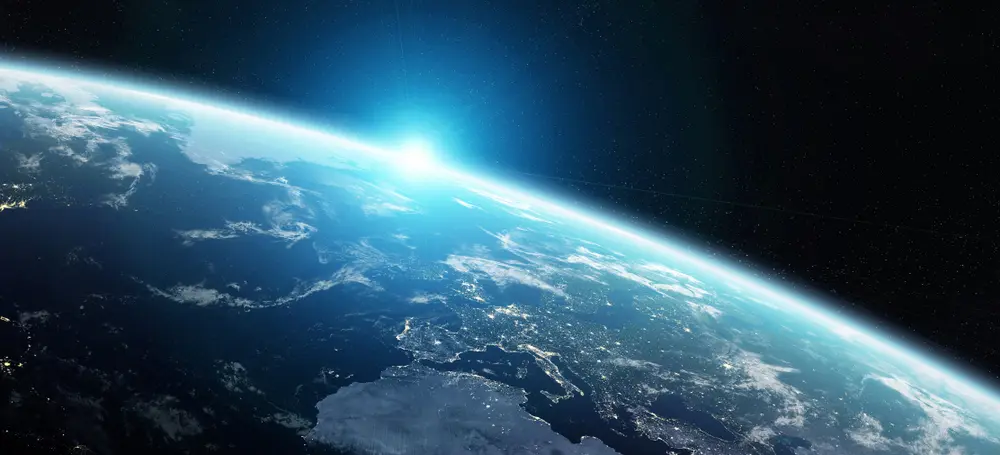
How long it takes for light from each planet in our solar system to reach Earth
Here are the average distances of each planet in our solar system from Earth, and the corresponding amount of time it takes for light to travel from that planet to Earth:
- Mercury : 77 million km (48 million miles) away from Earth on average so it takes about 3.2 minutes for light from Mercury to reach Earth.
- Venus : 261 million km (162 million miles) away from Earth on average so it takes about 6 minutes for light from Venus to reach Earth.
- Mars : 78 million km (48 million miles) away from Earth on average so it takes about 3-22 minutes (depending on the positions of Mars and Earth in their respective orbits) for light from Mars to reach Earth.
- Jupiter: 628 million km (390 million miles) away from Earth on average so it takes about 35-52 minutes (depending on the positions of Jupiter and Earth in their respective orbits) for light from Jupiter to reach Earth.
- Saturn: 1.28 billion km (795 million miles) away from Earth on average so it takes about 1-2 hours for light from Saturn to reach Earth.
- Uranus: 2.72 billion km (1.7 billion miles) away from Earth on average so it takes about 2.5-3 hours for light from Uranus to reach Earth.
- Neptune: 4.35 billion km (2.7 billion miles) away from Earth on average so it takes about 4-4.5 hours for light from Neptune to reach Earth.
So, the time it takes for light from each planet in our solar system to reach Earth varies depending on the distance between the two.
Astronomy is the study of light from the night sky because, in general, that’s the only way we can study these specimens. Understanding how light works is vital to understanding the data we observe.
Understanding the speed of light (299,792 kilometers per second or about 186,282 miles per second) and the fact that it is constant even if the source is moving helps us to understand the dynamics of our universe as well as the impact of this speed on mass and energy. The speed of light is effectively a speed limit for objects in the universe as the mass and energy would need to be infinite to surpass it which is impossible.
We also use the speed of light to calculate the distance to celestial objects using light-years, the distance light travels within a year, and better understand the apparent brightness we see on Earth compared with the actual brightness emitted from a star.
Understanding light helps us understand the universe because it helps us quantify what we see and therefore understand the mechanics of the universe.

Written by Sarah Hoffschwelle
Sarah Hoffschwelle is a freelance writer who covers a combination of topics including astronomy, general science and STEM, self-development, art, and societal commentary. In the past, Sarah worked in educational nonprofits providing free-choice learning experiences for audiences ages 2-99. As a lifelong space nerd, she loves sharing the universe with others through her words. She currently writes on Medium at https://medium.com/@sarah-marie and authors self-help and children’s books.
Wow! There's more to read 🚀
This page is part of our collection of articles about astronomy . If you enjoyed the read, then you’ll love the following articles.

10 of the weirdest facts about space

What Are Stars Made Of?
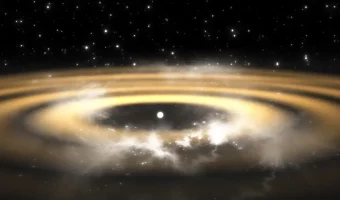
From Dust to Stars: A Guide to The Process of Star Formation

What makes the Moon shine?
- Virtual Events
- BBC Astronomy
- How we review
- Telescope mounts
- Finderscopes
- Astronomy accessories
- Top astro kit
- Astronomy for beginners
- Astronomy DIY
- Buyers' guides
- Online Planetarium
- Astronomy news
- Astrophoto guides
- Send us your images
How long does it take for light from the Sun to reach Earth?
The answer is either 8 minutes 20 seconds or thousands of years, depending on how you look at it!
Russell Deeks
It takes light from the Sun 8 minutes and 20 seconds to reach us on Earth – on average.
That’s the simple, straightforward answer – but whatever the razor-toting Mr Occam may tell you, the simple, straightforward answer seldom tells you the whole truth.
In this case, there are two factors that complicate the picture.
Firstly, the answer that it takes light from the Sun 8m 20s to reach Earth is derived by dividing the distance from the Sun to Earth – around 150 million kilometres – by the speed of light , which is around 300,000 km/s (kilometres per second).
That’ll give you a journey time of some 500 seconds, or eight minutes 20 seconds.

However, Earth’s orbit around the Sun is slightly elliptical rather than perfectly circular.
So the actual distance between our planet and the big fiery globule of burning gas that gives Earth light and heat can be anywhere from 147 to 152 million kilometres.
So light's actual journey time from the Sun to Earth can be anywhere from 490 to 507 seconds, or 8m 10s to 8m 27s.
Secondly, the answer above is how long it takes for any given photon of light to journey from the Sun’s surface to that of Earth – but that’s not the whole story.
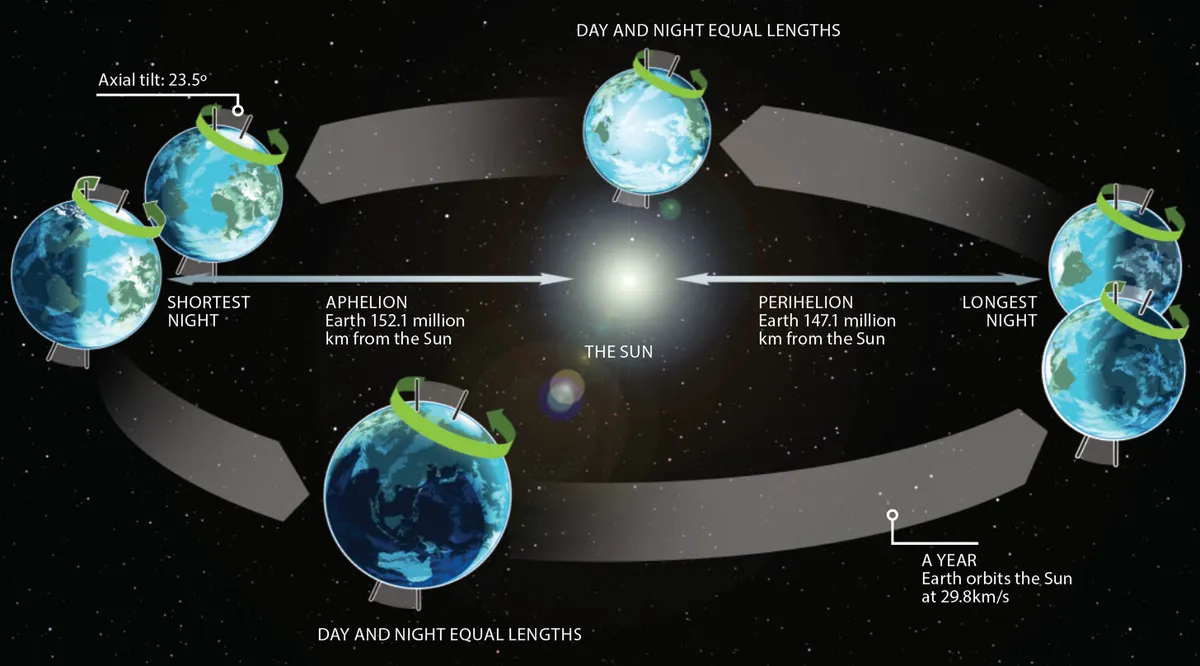
Photons of light, you see, aren’t formed at the Sun’s surface: they’re ‘made’ deep inside the star and because the Sun is, to quote Douglas Adams, "vastly, hugely, mind-bogglingly big".
It can take them thousands or even tens of thousands of years to reach the surface of the Sun, before they embark on their 8m 20s journey to Earth.
This means that while the photons of light coming your computer or screen that enable you to read this article are just nanoseconds old, those that hit your eyes when you step outside on a sunny day actually began their journey several thousand years ago.
Which is a bit longer than 8m 20s.

And which, as a side note, is why shadows are inherently funny.
Imagine being born inside a star, spending thousands of years fighting your way to its surface, bravely traversing millions of miles of interplanetary space and battling through Earth’s atmosphere all the way down to the ground.
Only, after all that effort, to have your plans thwarted by a lamp post or wheelie bin!
Share this article

Science writer

- Terms and conditions
- Manage preferences
Sciencing_Icons_Science SCIENCE
Sciencing_icons_biology biology, sciencing_icons_cells cells, sciencing_icons_molecular molecular, sciencing_icons_microorganisms microorganisms, sciencing_icons_genetics genetics, sciencing_icons_human body human body, sciencing_icons_ecology ecology, sciencing_icons_chemistry chemistry, sciencing_icons_atomic & molecular structure atomic & molecular structure, sciencing_icons_bonds bonds, sciencing_icons_reactions reactions, sciencing_icons_stoichiometry stoichiometry, sciencing_icons_solutions solutions, sciencing_icons_acids & bases acids & bases, sciencing_icons_thermodynamics thermodynamics, sciencing_icons_organic chemistry organic chemistry, sciencing_icons_physics physics, sciencing_icons_fundamentals-physics fundamentals, sciencing_icons_electronics electronics, sciencing_icons_waves waves, sciencing_icons_energy energy, sciencing_icons_fluid fluid, sciencing_icons_astronomy astronomy, sciencing_icons_geology geology, sciencing_icons_fundamentals-geology fundamentals, sciencing_icons_minerals & rocks minerals & rocks, sciencing_icons_earth scructure earth structure, sciencing_icons_fossils fossils, sciencing_icons_natural disasters natural disasters, sciencing_icons_nature nature, sciencing_icons_ecosystems ecosystems, sciencing_icons_environment environment, sciencing_icons_insects insects, sciencing_icons_plants & mushrooms plants & mushrooms, sciencing_icons_animals animals, sciencing_icons_math math, sciencing_icons_arithmetic arithmetic, sciencing_icons_addition & subtraction addition & subtraction, sciencing_icons_multiplication & division multiplication & division, sciencing_icons_decimals decimals, sciencing_icons_fractions fractions, sciencing_icons_conversions conversions, sciencing_icons_algebra algebra, sciencing_icons_working with units working with units, sciencing_icons_equations & expressions equations & expressions, sciencing_icons_ratios & proportions ratios & proportions, sciencing_icons_inequalities inequalities, sciencing_icons_exponents & logarithms exponents & logarithms, sciencing_icons_factorization factorization, sciencing_icons_functions functions, sciencing_icons_linear equations linear equations, sciencing_icons_graphs graphs, sciencing_icons_quadratics quadratics, sciencing_icons_polynomials polynomials, sciencing_icons_geometry geometry, sciencing_icons_fundamentals-geometry fundamentals, sciencing_icons_cartesian cartesian, sciencing_icons_circles circles, sciencing_icons_solids solids, sciencing_icons_trigonometry trigonometry, sciencing_icons_probability-statistics probability & statistics, sciencing_icons_mean-median-mode mean/median/mode, sciencing_icons_independent-dependent variables independent/dependent variables, sciencing_icons_deviation deviation, sciencing_icons_correlation correlation, sciencing_icons_sampling sampling, sciencing_icons_distributions distributions, sciencing_icons_probability probability, sciencing_icons_calculus calculus, sciencing_icons_differentiation-integration differentiation/integration, sciencing_icons_application application, sciencing_icons_projects projects, sciencing_icons_news news.
- Share Tweet Email Print
- Home ⋅
- Science ⋅
- Physics ⋅
- Sound & Light (Physics): How are They Different?
How Does Light Travel From the Sun to Earth?

How is Light Transmitted?
Electromagnetic waves.
To understand how light travels from the sun to the Earth, you have to understand what light is. Light is an electromagnetic wave--a wave of electric and magnetic energy oscillating very quickly. There are many different electromagnetic waves, and the type is determined by the speed of oscillation. For example, radio waves oscillate more slowly than light, while X-rays oscillate much more quickly. These electromagnetic waves travel in small packets called photons. Because light travels in both waves and photon packets, it behaves both like a wave and a particle.
Traveling Through Space
Most waves require a medium to travel in. For example, if you drop a rock in a pond, it makes waves in the water. No water, no waves. Because light consists of photons, however, it can travel through space like a stream of tiny particles. The photons actually travel more quickly through space and lose less energy on the way, because there are no molecules in the way to slow them down.
The Atmosphere
When light travels through space from the sun, all of the frequencies of light travel in a straight line. When light hits the atmosphere, however, the photons begin to collide with gas molecules. Red, orange and yellow photons have long wavelengths and can travel right through the gas molecules. Green, blue and purple photons, however, have shorter wavelengths, which allows molecules to easily absorb them. The molecules hold onto the photon for only an instant, then shoot them out again in a random direction. This is why the sky looks blue. Many of these scattered photons fly toward the Earth, making the sky appear to glow. This is also why sunsets look red. At sunset, the photons have to travel through a larger layer of atmosphere before they reach your eyes. More of the higher frequency photons are absorbed, leaving layers of red, orange and yellow.
Related Articles
How is a photon produced, how does light travel, how to calculate energy with wavelength, why are atomic emission spectra discontinuous, how to diffuse a laser beam, the modern theory of light, how to calculate the momentum of a photon of yellow..., how to convert photons to joules, do photons have mass, what is light measured in, how do radio waves work, easy high school physics experiments, how does humidity affect speed of sound, what is the difference between concave & convex mirrors, how to calculate a wavenumber, how does a spectrometer work, what causes the dispersion of white light, light wave experiments.
- NASA on Electromagnetic Waves
- Why is the Sky Blue? from Science Made Simple
About the Author
Isaiah David is a freelance writer and musician living in Portland, Ore. He has over five years experience as a professional writer and has been published on various online outlets. He holds a degree in creative writing from the University of Michigan.
Find Your Next Great Science Fair Project! GO

Ask an Explainer
How long does it take light from the sun to get to earth.
The speed of light is approximately 1,079,000,000 kilometers/hour (670,600,000 miles/hour). On average, the Sun is 150 million kilometers (93 million miles) away from Earth. This means that it takes a photon of light about 8 minutes and 20 seconds to travel from the Sun to Earth.

- Anatomy & Physiology
- Astrophysics
- Earth Science
- Environmental Science
- Organic Chemistry
- Precalculus
- Trigonometry
- English Grammar
- U.S. History
- World History
... and beyond
- Socratic Meta
- Featured Answers

How long does it take light to travel from the sun to Earth?

We have completed maintenance on Astronomy.com and action may be required on your account. Learn More

- Login/Register
- Solar System
- Exotic Objects
- Upcoming Events
- Deep-Sky Objects
- Observing Basics
- Telescopes and Equipment
- Astrophotography
- Space Exploration
- Human Spaceflight
- Robotic Spaceflight
- The Magazine
What is the speed of light? Here’s the history, discovery of the cosmic speed limit

On one hand, the speed of light is just a number: 299,792,458 meters per second. And on the other, it’s one of the most important constants that appears in nature and defines the relationship of causality itself.
As far as we can measure, it is a constant. It is the same speed for every observer in the entire universe. This constancy was first established in the late 1800’s with the experiments of Albert Michelson and Edward Morley at Case Western Reserve University . They attempted to measure changes in the speed of light as the Earth orbited around the Sun. They found no such variation, and no experiment ever since then has either.
Observations of the cosmic microwave background, the light released when the universe was 380,000 years old, show that the speed of light hasn’t measurably changed in over 13.8 billion years.
In fact, we now define the speed of light to be a constant, with a precise speed of 299,792,458 meters per second. While it remains a remote possibility in deeply theoretical physics that light may not be a constant, for all known purposes it is a constant, so it’s better to just define it and move on with life.
How was the speed of light first measured?
In 1676 the Danish astronomer Ole Christensen Romer made the first quantitative measurement of how fast light travels. He carefully observed the orbit of Io, the innermost moon of Jupiter. As the Earth circles the Sun in its own orbit, sometimes it approaches Jupiter and sometimes it recedes away from it. When the Earth is approaching Jupiter, the path that light has to travel from Io is shorter than when the Earth is receding away from Jupiter. By carefully measuring the changes to Io’s orbital period, Romer calculated a speed of light of around 220,000 kilometers per second.
Observations continued to improve until by the 19 th century astronomers and physicists had developed the sophistication to get very close to the modern value. In 1865, James Clerk Maxwell made a remarkable discovery. He was investigating the properties of electricity and magnetism, which for decades had remained mysterious in unconnected laboratory experiments around the world. Maxwell found that electricity and magnetism were really two sides of the same coin, both manifestations of a single electromagnetic force.
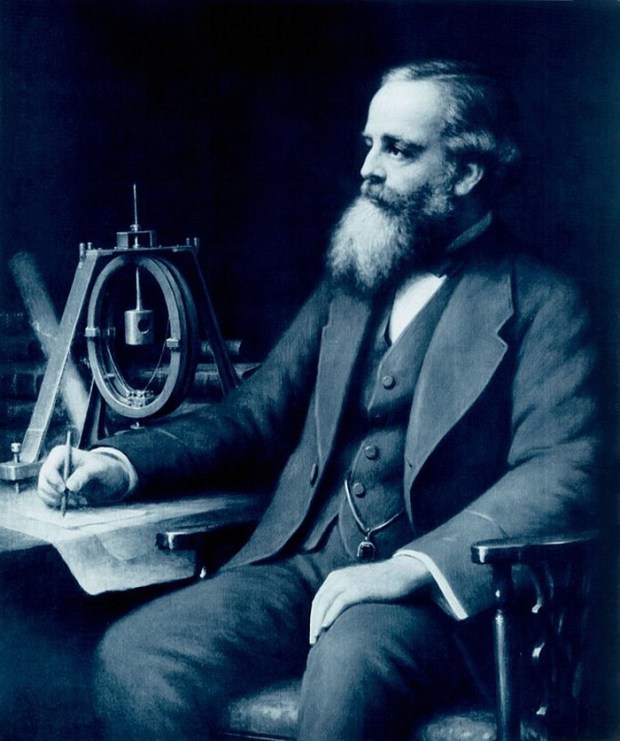
As Maxwell explored the consequences of his new theory, he found that changing magnetic fields can lead to changing electric fields, which then lead to a new round of changing magnetic fields. The fields leapfrog over each other and can even travel through empty space. When Maxwell went to calculate the speed of these electromagnetic waves, he was surprised to see the speed of light pop out – the first theoretical calculation of this important number.
What is the most precise measurement of the speed of light?
Because it is defined to be a constant, there’s no need to measure it further. The number we’ve defined is it, with no uncertainty, no error bars. It’s done. But the speed of light is just that – a speed. The number we choose to represent it depends on the units we use: kilometers versus miles, seconds versus hours, and so on. In fact, physicists commonly just set the speed of light to be 1 to make their calculations easier. So instead of trying to measure the speed light travels, physicists turn to more precisely measuring other units, like the length of the meter or the duration of the second. In other words, the defined value of the speed of light is used to establish the length of other units like the meter.
How does light slow down?
Yes, the speed of light is always a constant. But it slows down whenever it travels through a medium like air or water. How does this work? There are a few different ways to present an answer to this question, depending on whether you prefer a particle-like picture or a wave-like picture.
In a particle-like picture, light is made of tiny little bullets called photons. All those photons always travel at the speed of light, but as light passes through a medium those photons get all tangled up, bouncing around among all the molecules of the medium. This slows down the overall propagation of light, because it takes more time for the group of photons to make it through.
In a wave-like picture, light is made of electromagnetic waves. When these waves pass through a medium, they get all the charged particles in motion, which in turn generate new electromagnetic waves of their own. These interfere with the original light, forcing it to slow down as it passes through.
Either way, light always travels at the same speed, but matter can interfere with its travel, making it slow down.
Why is the speed of light important?
The speed of light is important because it’s about way more than, well, the speed of light. In the early 1900’s Einstein realized just how special this speed is. The old physics, dominated by the work of Isaac Newton, said that the universe had a fixed reference frame from which we could measure all motion. This is why Michelson and Morley went looking for changes in the speed, because it should change depending on our point of view. But their experiments showed that the speed was always constant, so what gives?
Einstein decided to take this experiment at face value. He assumed that the speed of light is a true, fundamental constant. No matter where you are, no matter how fast you’re moving, you’ll always see the same speed.
This is wild to think about. If you’re traveling at 99% the speed of light and turn on a flashlight, the beam will race ahead of you at…exactly the speed of light, no more, no less. If you’re coming from the opposite direction, you’ll still also measure the exact same speed.
This constancy forms the basis of Einstein’s special theory of relativity, which tells us that while all motion is relative – different observers won’t always agree on the length of measurements or the duration of events – some things are truly universal, like the speed of light.
Can you go faster than light speed?
Nope. Nothing can. Any particle with zero mass must travel at light speed. But anything with mass (which is most of the universe) cannot. The problem is relativity. The faster you go, the more energy you have. But we know from Einstein’s relativity that energy and mass are the same thing. So the more energy you have, the more mass you have, which makes it harder for you to go even faster. You can get as close as you want to the speed of light, but to actually crack that barrier takes an infinite amount of energy. So don’t even try.
How is the speed at which light travels related to causality?
If you think you can find a cheat to get around the limitations of light speed, then I need to tell you about its role in special relativity. You see, it’s not just about light. It just so happens that light travels at this special speed, and it was the first thing we discovered to travel at this speed. So it could have had another name. Indeed, a better name for this speed might be “the speed of time.”
Related: Is time travel possible? An astrophysicist explains
We live in a universe of causes and effects. All effects are preceded by a cause, and all causes lead to effects. The speed of light limits how quickly causes can lead to effects. Because it’s a maximum speed limit for any motion or interaction, in a given amount of time there’s a limit to what I can influence. If I want to tap you on the shoulder and you’re right next to me, I can do it right away. But if you’re on the other side of the planet, I have to travel there first. The motion of me traveling to you is limited by the speed of light, so that sets how quickly I can tap you on the shoulder – the speed light travels dictates how quickly a single cause can create an effect.
The ability to go faster than light would allow effects to happen before their causes. In essence, time travel into the past would be possible with faster-than-light travel. Since we view time as the unbroken chain of causes and effects going from the past to the future, breaking the speed of light would break causality, which would seriously undermine our sense of the forward motion of time.
Why does light travel at this speed?
No clue. It appears to us as a fundamental constant of nature. We have no theory of physics that explains its existence or why it has the value that it does. We hope that a future understanding of nature will provide this explanation, but right now all investigations are purely theoretical. For now, we just have to take it as a given.

2024 Full Moon calendar: Dates, times, types, and names

A Stonehenge mystery could be solved soon during a rare lunar event


The best telescopes if you want to spend from $90 to $11,000

Meet Katya Echazarreta, the first Mexican-born woman to travel to space

Evidence grows that meteorites, comets could have brought essentials of life to early Earth

Catch the Lyrid meteor shower: This Week in Astronomy with Dave Eicher

What time is it on the Moon? We might soon know

Jupiter: Size, distance from the Sun, orbit

Jupiter’s moon Io has likely been active for our solar system’s entire history

Shop Our Online Science Store
Solar micro car kit diy stem kit.
- $7.99 $4.95
Doodling Shake Bot DIY STEM Kit
- $8.99 $4.95
Solar & Battery Fan DIY STEM Kit
- $9.99 $5.95
Fan Micro Car DIY STEM Kit
- $9.99 $4.95
Battery-Powered Balancing Robot DIY STEM Kit
Simple dc motor diy stem kit, 3-in-1 alternative energy car diy stem kit.
- $19.99 $14.95
Solar + Battery Car DIY STEM Kit
- $11.99 $5.95
- Privacy Policy
- Cookie Policy

What Is a Light-Year?

An image of distant galaxies captured by the NASA/ESA Hubble Space Telescope. Credit: ESA/Hubble & NASA, RELICS; Acknowledgment: D. Coe et al.
For most space objects, we use light-years to describe their distance. A light-year is the distance light travels in one Earth year. One light-year is about 6 trillion miles (9 trillion km). That is a 6 with 12 zeros behind it!
Looking Back in Time
When we use powerful telescopes to look at distant objects in space, we are actually looking back in time. How can this be?
Light travels at a speed of 186,000 miles (or 300,000 km) per second. This seems really fast, but objects in space are so far away that it takes a lot of time for their light to reach us. The farther an object is, the farther in the past we see it.
Our Sun is the closest star to us. It is about 93 million miles away. So, the Sun's light takes about 8.3 minutes to reach us. This means that we always see the Sun as it was about 8.3 minutes ago.
The next closest star to us is about 4.3 light-years away. So, when we see this star today, we’re actually seeing it as it was 4.3 years ago. All of the other stars we can see with our eyes are farther, some even thousands of light-years away.
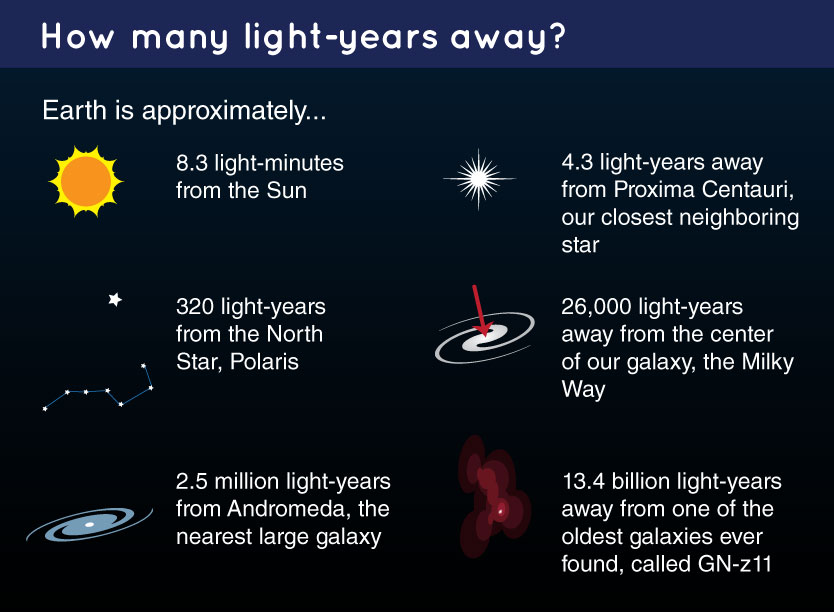
Stars are found in large groups called galaxies . A galaxy can have millions or billions of stars. The nearest large galaxy to us, Andromeda, is 2.5 million light-years away. So, we see Andromeda as it was 2.5 million years in the past. The universe is filled with billions of galaxies, all farther away than this. Some of these galaxies are much farther away.
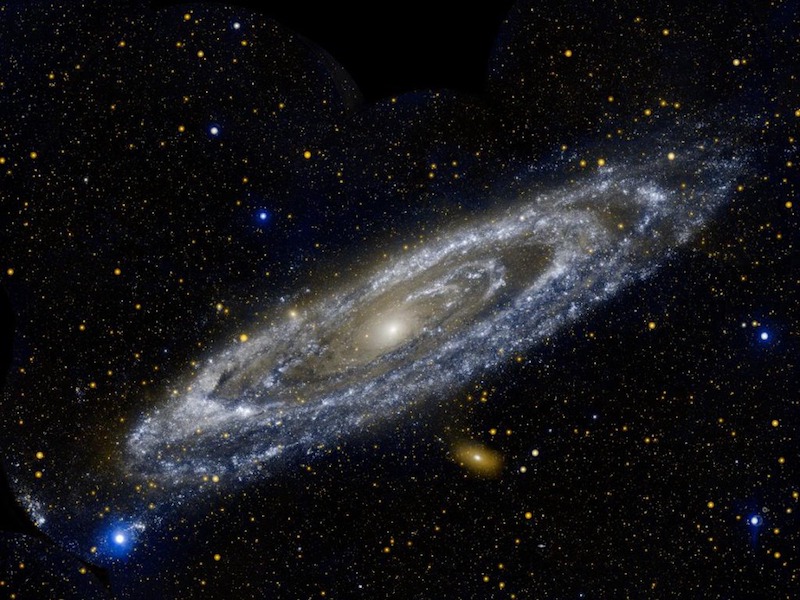
An image of the Andromeda galaxy, as seen by NASA's GALEX observatory. Credit: NASA/JPL-Caltech
In 2016, NASA's Hubble Space Telescope looked at the farthest galaxy ever seen, called GN-z11. It is 13.4 billion light-years away, so today we can see it as it was 13.4 billion years ago. That is only 400 million years after the big bang . It is one of the first galaxies ever formed in the universe.
Learning about the very first galaxies that formed after the big bang, like this one, helps us understand what the early universe was like.
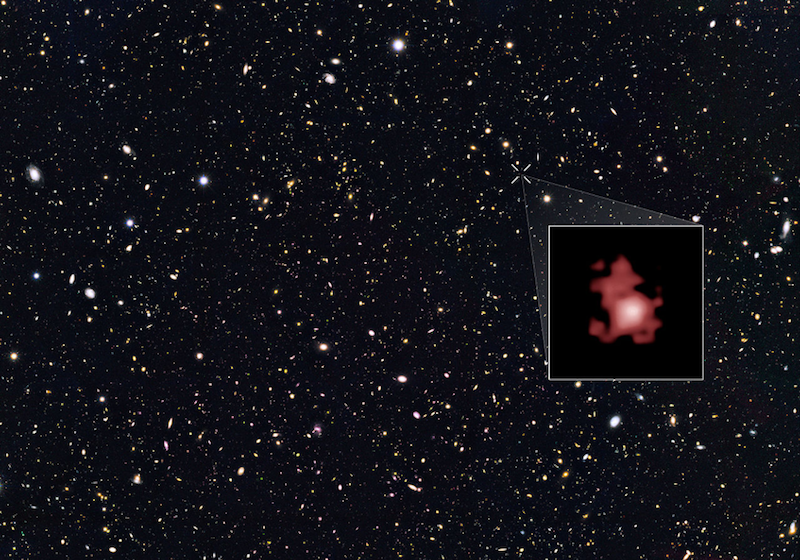
This picture shows hundreds of very old and distant galaxies. The oldest one found so far in GN-z11 (shown in the close up image). The image is a bit blurry because this galaxy is so far away. Credit: NASA, ESA, P. Oesch (Yale University), G. Brammer (STScI), P. van Dokkum (Yale University), and G. Illingworth (University of California, Santa Cruz)
More to explore

What Is a Galaxy?

How Far Away Is the Moon?
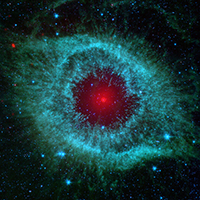
What Is a Nebula?
If you liked this, you may like:
What is the speed of light?
The speed of light is the speed limit of the universe. Or is it?

What is a light-year?
- Speed of light FAQs
- Special relativity
- Faster than light
- Slowing down light
- Faster-than-light travel
Bibliography
The speed of light traveling through a vacuum is exactly 299,792,458 meters (983,571,056 feet) per second. That's about 186,282 miles per second — a universal constant known in equations as "c," or light speed.
According to physicist Albert Einstein 's theory of special relativity , on which much of modern physics is based, nothing in the universe can travel faster than light. The theory states that as matter approaches the speed of light, the matter's mass becomes infinite. That means the speed of light functions as a speed limit on the whole universe . The speed of light is so immutable that, according to the U.S. National Institute of Standards and Technology , it is used to define international standard measurements like the meter (and by extension, the mile, the foot and the inch). Through some crafty equations, it also helps define the kilogram and the temperature unit Kelvin .
But despite the speed of light's reputation as a universal constant, scientists and science fiction writers alike spend time contemplating faster-than-light travel. So far no one's been able to demonstrate a real warp drive, but that hasn't slowed our collective hurtle toward new stories, new inventions and new realms of physics.
Related: Special relativity holds up to a high-energy test
A l ight-year is the distance that light can travel in one year — about 6 trillion miles (10 trillion kilometers). It's one way that astronomers and physicists measure immense distances across our universe.
Light travels from the moon to our eyes in about 1 second, which means the moon is about 1 light-second away. Sunlight takes about 8 minutes to reach our eyes, so the sun is about 8 light minutes away. Light from Alpha Centauri , which is the nearest star system to our own, requires roughly 4.3 years to get here, so Alpha Centauri is 4.3 light-years away.
"To obtain an idea of the size of a light-year, take the circumference of the Earth (24,900 miles), lay it out in a straight line, multiply the length of the line by 7.5 (the corresponding distance is one light-second), then place 31.6 million similar lines end to end," NASA's Glenn Research Center says on its website . "The resulting distance is almost 6 trillion (6,000,000,000,000) miles!"
Stars and other objects beyond our solar system lie anywhere from a few light-years to a few billion light-years away. And everything astronomers "see" in the distant universe is literally history. When astronomers study objects that are far away, they are seeing light that shows the objects as they existed at the time that light left them.
This principle allows astronomers to see the universe as it looked after the Big Bang , which took place about 13.8 billion years ago. Objects that are 10 billion light-years away from us appear to astronomers as they looked 10 billion years ago — relatively soon after the beginning of the universe — rather than how they appear today.
Related: Why the universe is all history
Speed of light FAQs answered by an expert
We asked Rob Zellem, exoplanet-hunter and staff scientist at NASA's Jet Propulsion Lab, a few frequently asked questions about the speed of light.

Dr. Rob Zellem is a staff scientist at NASA's Jet Propulsion Laboratory, a federally funded research and development center operated by the California Institute of Technology. Rob is the project lead for Exoplanet Watch, a citizen science project to observe exoplanets, planets outside of our own solar system, with small telescopes. He is also the Science Calibration lead for the Nancy Grace Roman Space Telescope's Coronagraph Instrument, which will directly image exoplanets.
What is faster than the speed of light?
Nothing! Light is a "universal speed limit" and, according to Einstein's theory of relativity, is the fastest speed in the universe: 300,000 kilometers per second (186,000 miles per second).
Is the speed of light constant?
The speed of light is a universal constant in a vacuum, like the vacuum of space. However, light *can* slow down slightly when it passes through an absorbing medium, like water (225,000 kilometers per second = 140,000 miles per second) or glass (200,000 kilometers per second = 124,000 miles per second).
Who discovered the speed of light?
One of the first measurements of the speed of light was by Rømer in 1676 by observing the moons of Jupiter . The speed of light was first measured to high precision in 1879 by the Michelson-Morley Experiment.
How do we know the speed of light?
Rømer was able to measure the speed of light by observing eclipses of Jupiter's moon Io. When Jupiter was closer to Earth, Rømer noted that eclipses of Io occurred slightly earlier than when Jupiter was farther away. Rømer attributed this effect due the time it takes for light to travel over the longer distance when Jupiter was farther from the Earth.
How did we learn the speed of light?

As early as the 5th century BC, Greek philosophers like Empedocles and Aristotle disagreed on the nature of light speed. Empedocles proposed that light, whatever it was made of, must travel and therefore, must have a rate of travel. Aristotle wrote a rebuttal of Empedocles' view in his own treatise, On Sense and the Sensible , arguing that light, unlike sound and smell, must be instantaneous. Aristotle was wrong, of course, but it would take hundreds of years for anyone to prove it.
In the mid 1600s, the Italian astronomer Galileo Galilei stood two people on hills less than a mile apart. Each person held a shielded lantern. One uncovered his lantern; when the other person saw the flash, he uncovered his too. But Galileo's experimental distance wasn't far enough for his participants to record the speed of light. He could only conclude that light traveled at least 10 times faster than sound.
In the 1670s, Danish astronomer Ole Rømer tried to create a reliable timetable for sailors at sea, and according to NASA , accidentally came up with a new best estimate for the speed of light. To create an astronomical clock, he recorded the precise timing of the eclipses of Jupiter's moon , Io, from Earth . Over time, Rømer observed that Io's eclipses often differed from his calculations. He noticed that the eclipses appeared to lag the most when Jupiter and Earth were moving away from one another, showed up ahead of time when the planets were approaching and occurred on schedule when the planets were at their closest or farthest points. This observation demonstrated what we today know as the Doppler effect, the change in frequency of light or sound emitted by a moving object that in the astronomical world manifests as the so-called redshift , the shift towards "redder", longer wavelengths in objects speeding away from us. In a leap of intuition, Rømer determined that light was taking measurable time to travel from Io to Earth.
Rømer used his observations to estimate the speed of light. Since the size of the solar system and Earth's orbit wasn't yet accurately known, argued a 1998 paper in the American Journal of Physics , he was a bit off. But at last, scientists had a number to work with. Rømer's calculation put the speed of light at about 124,000 miles per second (200,000 km/s).
In 1728, English physicist James Bradley based a new set of calculations on the change in the apparent position of stars caused by Earth's travels around the sun. He estimated the speed of light at 185,000 miles per second (301,000 km/s) — accurate to within about 1% of the real value, according to the American Physical Society .
Two new attempts in the mid-1800s brought the problem back to Earth. French physicist Hippolyte Fizeau set a beam of light on a rapidly rotating toothed wheel, with a mirror set up 5 miles (8 km) away to reflect it back to its source. Varying the speed of the wheel allowed Fizeau to calculate how long it took for the light to travel out of the hole, to the adjacent mirror, and back through the gap. Another French physicist, Leon Foucault, used a rotating mirror rather than a wheel to perform essentially the same experiment. The two independent methods each came within about 1,000 miles per second (1,609 km/s) of the speed of light.

Another scientist who tackled the speed of light mystery was Poland-born Albert A. Michelson, who grew up in California during the state's gold rush period, and honed his interest in physics while attending the U.S. Naval Academy, according to the University of Virginia . In 1879, he attempted to replicate Foucault's method of determining the speed of light, but Michelson increased the distance between mirrors and used extremely high-quality mirrors and lenses. Michelson's result of 186,355 miles per second (299,910 km/s) was accepted as the most accurate measurement of the speed of light for 40 years, until Michelson re-measured it himself. In his second round of experiments, Michelson flashed lights between two mountain tops with carefully measured distances to get a more precise estimate. And in his third attempt just before his death in 1931, according to the Smithsonian's Air and Space magazine, he built a mile-long depressurized tube of corrugated steel pipe. The pipe simulated a near-vacuum that would remove any effect of air on light speed for an even finer measurement, which in the end was just slightly lower than the accepted value of the speed of light today.
Michelson also studied the nature of light itself, wrote astrophysicist Ethan Siegal in the Forbes science blog, Starts With a Bang . The best minds in physics at the time of Michelson's experiments were divided: Was light a wave or a particle?
Michelson, along with his colleague Edward Morley, worked under the assumption that light moved as a wave, just like sound. And just as sound needs particles to move, Michelson and Morley and other physicists of the time reasoned, light must have some kind of medium to move through. This invisible, undetectable stuff was called the "luminiferous aether" (also known as "ether").
Though Michelson and Morley built a sophisticated interferometer (a very basic version of the instrument used today in LIGO facilities), Michelson could not find evidence of any kind of luminiferous aether whatsoever. Light, he determined, can and does travel through a vacuum.
"The experiment — and Michelson's body of work — was so revolutionary that he became the only person in history to have won a Nobel Prize for a very precise non-discovery of anything," Siegal wrote. "The experiment itself may have been a complete failure, but what we learned from it was a greater boon to humanity and our understanding of the universe than any success would have been!"
Special relativity and the speed of light
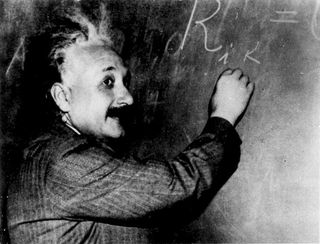
Einstein's theory of special relativity unified energy, matter and the speed of light in a famous equation: E = mc^2. The equation describes the relationship between mass and energy — small amounts of mass (m) contain, or are made up of, an inherently enormous amount of energy (E). (That's what makes nuclear bombs so powerful: They're converting mass into blasts of energy.) Because energy is equal to mass times the speed of light squared, the speed of light serves as a conversion factor, explaining exactly how much energy must be within matter. And because the speed of light is such a huge number, even small amounts of mass must equate to vast quantities of energy.
In order to accurately describe the universe, Einstein's elegant equation requires the speed of light to be an immutable constant. Einstein asserted that light moved through a vacuum, not any kind of luminiferous aether, and in such a way that it moved at the same speed no matter the speed of the observer.
Think of it like this: Observers sitting on a train could look at a train moving along a parallel track and think of its relative movement to themselves as zero. But observers moving nearly the speed of light would still perceive light as moving away from them at more than 670 million mph. (That's because moving really, really fast is one of the only confirmed methods of time travel — time actually slows down for those observers, who will age slower and perceive fewer moments than an observer moving slowly.)
In other words, Einstein proposed that the speed of light doesn't vary with the time or place that you measure it, or how fast you yourself are moving.
Therefore, objects with mass cannot ever reach the speed of light. If an object ever did reach the speed of light, its mass would become infinite. And as a result, the energy required to move the object would also become infinite: an impossibility.
That means if we base our understanding of physics on special relativity (which most modern physicists do), the speed of light is the immutable speed limit of our universe — the fastest that anything can travel.
What goes faster than the speed of light?
Although the speed of light is often referred to as the universe's speed limit, the universe actually expands even faster. The universe expands at a little more than 42 miles (68 kilometers) per second for each megaparsec of distance from the observer, wrote astrophysicist Paul Sutter in a previous article for Space.com . (A megaparsec is 3.26 million light-years — a really long way.)
In other words, a galaxy 1 megaparsec away appears to be traveling away from the Milky Way at a speed of 42 miles per second (68 km/s), while a galaxy two megaparsecs away recedes at nearly 86 miles per second (136 km/s), and so on.
"At some point, at some obscene distance, the speed tips over the scales and exceeds the speed of light, all from the natural, regular expansion of space," Sutter explained. "It seems like it should be illegal, doesn't it?"
Special relativity provides an absolute speed limit within the universe, according to Sutter, but Einstein's 1915 theory regarding general relativity allows different behavior when the physics you're examining are no longer "local."
"A galaxy on the far side of the universe? That's the domain of general relativity, and general relativity says: Who cares! That galaxy can have any speed it wants, as long as it stays way far away, and not up next to your face," Sutter wrote. "Special relativity doesn't care about the speed — superluminal or otherwise — of a distant galaxy. And neither should you."
Does light ever slow down?

Light in a vacuum is generally held to travel at an absolute speed, but light traveling through any material can be slowed down. The amount that a material slows down light is called its refractive index. Light bends when coming into contact with particles, which results in a decrease in speed.
For example, light traveling through Earth's atmosphere moves almost as fast as light in a vacuum, slowing down by just three ten-thousandths of the speed of light. But light passing through a diamond slows to less than half its typical speed, PBS NOVA reported. Even so, it travels through the gem at over 277 million mph (almost 124,000 km/s) — enough to make a difference, but still incredibly fast.
Light can be trapped — and even stopped — inside ultra-cold clouds of atoms, according to a 2001 study published in the journal Nature . More recently, a 2018 study published in the journal Physical Review Letters proposed a new way to stop light in its tracks at "exceptional points," or places where two separate light emissions intersect and merge into one.
Researchers have also tried to slow down light even when it's traveling through a vacuum. A team of Scottish scientists successfully slowed down a single photon, or particle of light, even as it moved through a vacuum, as described in their 2015 study published in the journal Science . In their measurements, the difference between the slowed photon and a "regular" photon was just a few millionths of a meter, but it demonstrated that light in a vacuum can be slower than the official speed of light.
Can we travel faster than light?
— Spaceship could fly faster than light
— Here's what the speed of light looks like in slow motion
— Why is the speed of light the way it is?
Science fiction loves the idea of "warp speed." Faster-than-light travel makes countless sci-fi franchises possible, condensing the vast expanses of space and letting characters pop back and forth between star systems with ease.
But while faster-than-light travel isn't guaranteed impossible, we'd need to harness some pretty exotic physics to make it work. Luckily for sci-fi enthusiasts and theoretical physicists alike, there are lots of avenues to explore.
All we have to do is figure out how to not move ourselves — since special relativity would ensure we'd be long destroyed before we reached high enough speed — but instead, move the space around us. Easy, right?
One proposed idea involves a spaceship that could fold a space-time bubble around itself. Sounds great, both in theory and in fiction.
"If Captain Kirk were constrained to move at the speed of our fastest rockets, it would take him a hundred thousand years just to get to the next star system," said Seth Shostak, an astronomer at the Search for Extraterrestrial Intelligence (SETI) Institute in Mountain View, California, in a 2010 interview with Space.com's sister site LiveScience . "So science fiction has long postulated a way to beat the speed of light barrier so the story can move a little more quickly."
Without faster-than-light travel, any "Star Trek" (or "Star War," for that matter) would be impossible. If humanity is ever to reach the farthest — and constantly expanding — corners of our universe, it will be up to future physicists to boldly go where no one has gone before.
Additional resources
For more on the speed of light, check out this fun tool from Academo that lets you visualize how fast light can travel from any place on Earth to any other. If you’re more interested in other important numbers, get familiar with the universal constants that define standard systems of measurement around the world with the National Institute of Standards and Technology . And if you’d like more on the history of the speed of light, check out the book " Lightspeed: The Ghostly Aether and the Race to Measure the Speed of Light " (Oxford, 2019) by John C. H. Spence.
Aristotle. “On Sense and the Sensible.” The Internet Classics Archive, 350AD. http://classics.mit.edu/Aristotle/sense.2.2.html .
D’Alto, Nick. “The Pipeline That Measured the Speed of Light.” Smithsonian Magazine, January 2017. https://www.smithsonianmag.com/air-space-magazine/18_fm2017-oo-180961669/ .
Fowler, Michael. “Speed of Light.” Modern Physics. University of Virginia. Accessed January 13, 2022. https://galileo.phys.virginia.edu/classes/252/spedlite.html#Albert%20Abraham%20Michelson .
Giovannini, Daniel, Jacquiline Romero, Václav Potoček, Gergely Ferenczi, Fiona Speirits, Stephen M. Barnett, Daniele Faccio, and Miles J. Padgett. “Spatially Structured Photons That Travel in Free Space Slower than the Speed of Light.” Science, February 20, 2015. https://www.science.org/doi/abs/10.1126/science.aaa3035 .
Goldzak, Tamar, Alexei A. Mailybaev, and Nimrod Moiseyev. “Light Stops at Exceptional Points.” Physical Review Letters 120, no. 1 (January 3, 2018): 013901. https://doi.org/10.1103/PhysRevLett.120.013901 .
Hazen, Robert. “What Makes Diamond Sparkle?” PBS NOVA, January 31, 2000. https://www.pbs.org/wgbh/nova/article/diamond-science/ .
“How Long Is a Light-Year?” Glenn Learning Technologies Project, May 13, 2021. https://www.grc.nasa.gov/www/k-12/Numbers/Math/Mathematical_Thinking/how_long_is_a_light_year.htm .
American Physical Society News. “July 1849: Fizeau Publishes Results of Speed of Light Experiment,” July 2010. http://www.aps.org/publications/apsnews/201007/physicshistory.cfm .
Liu, Chien, Zachary Dutton, Cyrus H. Behroozi, and Lene Vestergaard Hau. “Observation of Coherent Optical Information Storage in an Atomic Medium Using Halted Light Pulses.” Nature 409, no. 6819 (January 2001): 490–93. https://doi.org/10.1038/35054017 .
NIST. “Meet the Constants.” October 12, 2018. https://www.nist.gov/si-redefinition/meet-constants .
Ouellette, Jennifer. “A Brief History of the Speed of Light.” PBS NOVA, February 27, 2015. https://www.pbs.org/wgbh/nova/article/brief-history-speed-light/ .
Shea, James H. “Ole Ro/Mer, the Speed of Light, the Apparent Period of Io, the Doppler Effect, and the Dynamics of Earth and Jupiter.” American Journal of Physics 66, no. 7 (July 1, 1998): 561–69. https://doi.org/10.1119/1.19020 .
Siegel, Ethan. “The Failed Experiment That Changed The World.” Forbes, April 21, 2017. https://www.forbes.com/sites/startswithabang/2017/04/21/the-failed-experiment-that-changed-the-world/ .
Stern, David. “Rømer and the Speed of Light,” October 17, 2016. https://pwg.gsfc.nasa.gov/stargaze/Sun4Adop1.htm .
Join our Space Forums to keep talking space on the latest missions, night sky and more! And if you have a news tip, correction or comment, let us know at: [email protected].
Get the Space.com Newsletter
Breaking space news, the latest updates on rocket launches, skywatching events and more!

Vicky Stein is a science writer based in California. She has a bachelor's degree in ecology and evolutionary biology from Dartmouth College and a graduate certificate in science writing from the University of California, Santa Cruz (2018). Afterwards, she worked as a news assistant for PBS NewsHour, and now works as a freelancer covering anything from asteroids to zebras. Follow her most recent work (and most recent pictures of nudibranchs) on Twitter.
Happy Earth Day 2024! NASA picks 6 new airborne missions to study our changing planet
Car-size asteroid gives Earth a super-close shave with flyby closer than some satellites
Solar eclipse 2024: Live updates
Most Popular
- 2 How could life survive on tidally locked planets?
- 3 12 of the best total solar eclipse 2024 photos from our readers
- 4 Saturn's ocean moon Enceladus is able to support life − my research team is working out how to detect extraterrestrial cells there
- 5 Why is it so hard to send humans back to the moon?

The Nine Planets
How Far is the Sun From Earth?
Everything in the Universe is moving, from a couple of kilometers/miles per second to more than 200 km / 124 mi per second, with space itself theorized to expand faster than even the speed of light, which is 299,792 km / 186,282 mi per second.
Most of the objects in our universe appear to be drifting away from us, while others, such as the Andromeda Galaxy , are closing in on us, but let us take a closer look at the celestial objects in our vicinity, like the Sun.
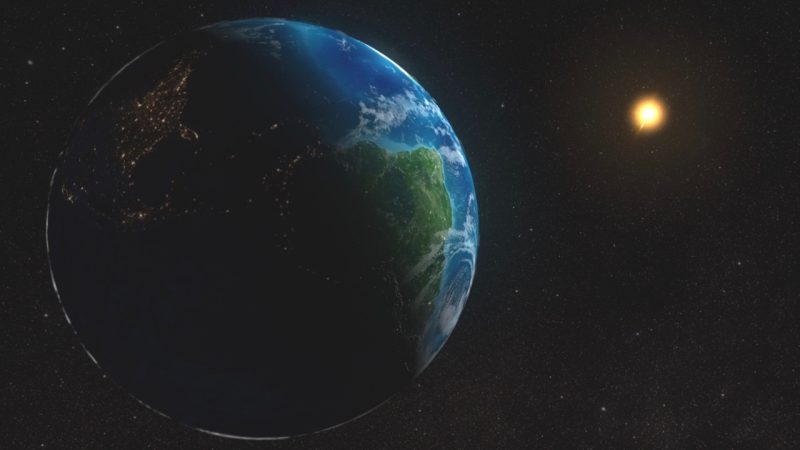
How far is the Sun from Earth? Well, when it comes to space, we apply different measurements, and in terms of distance, we speak trough astronomical units.
An astronomical unit (AU) is the equivalent of 150 million km / 93 million mi, and the Sun is 1 AU away from Earth. In light-years, the Sun is 0.00001581 light-years away, while in light minutes, the Sun is 8.20 light minutes away, or 500 light-seconds away from Earth.
If we were to speak in meters, then the Sun would be 150.4 billion meters away from Earth. The Earth orbits the Sun once every 365.3 days, while farther planets such as Mars, completes an orbit around the Sun in 687 days. For comparison, Mars is 1.5 AU away from the Sun, which would translate to 227.94 million km / 141.70 million mi.
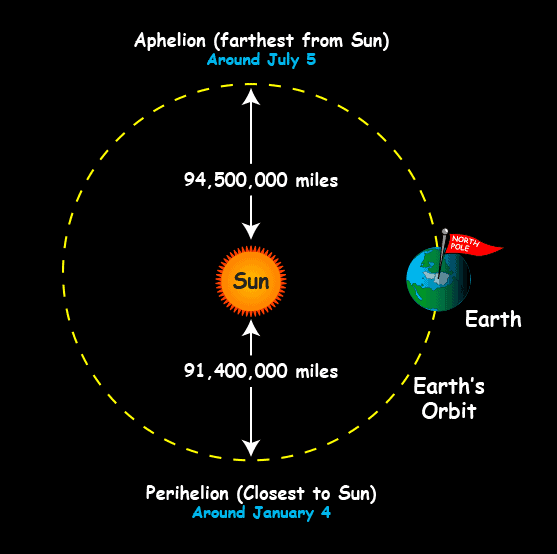
Since the Earth moves around the Sun, the distance differs, with Earth’s closest point from the Sun – perihelion – reaching 147.5 million km / 91.3 million mi.
When it comes to Earth’s farthest point from the Sun – aphelion – it is around 152 million km / 94.5 million mi, a little over 1 AU away from the Sun.
How Long Would It Take to Get to the Sun From Earth?
It’s tough to predict a spacecraft’s journey towards the Sun. If we were to launch an imaginary spacecraft from Earth that would travel around 153,454 mi / 246,960 km per hour constantly, it would reach the Sun in 606 hours, or 25 days.
However, what clouds our estimation is the fact that it is impossible to launch a spacecraft that would constantly maintain its top speed from the start. When the spacecraft is launched, it will take several minutes or hours to reach its top speed.
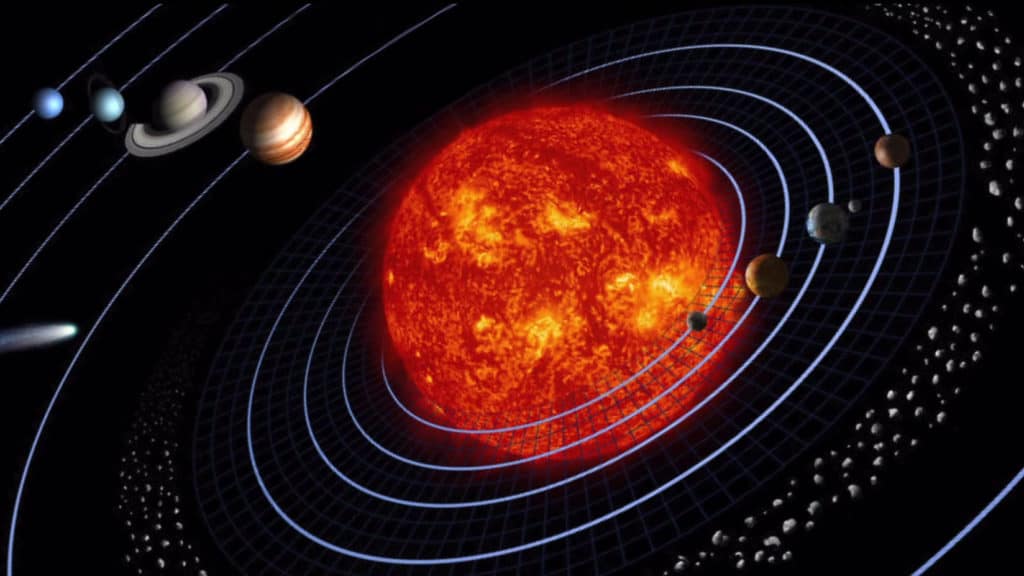
One of the fastest planned spacecraft on Earth is the Parker Solar Probe. This probe might reach a maximum speed of 430,000 mi / 692,017 km per hour. This means that the spaceship may get to the Sun in around 216 hours or nine days.
However, there is an additional problem. Nothing in space stays still, so we can’t launch anything directly at the Sun, because the moment the object would arrive at the Sun’s position, it would no longer be there.
Therefore, we first have to predict where the Sun would be, based upon its moving speed, and then calculate our object’s moving rate, and most of all, we even have to consider our Earth’s movement.
How Long Would It Take to Get to the Sun in a Car?
Let’s say we could drive our cars towards the Sun. Since when it comes to space, distances take on a whole new value, maybe with this hypothetical scenario, we might more easily familiarize ourselves with the actual length of the Sun, how far away it is.
So how long would it take to get to the Sun in a car? If our car would travel at a constant speed of around 100 mph, and if we could drive for 24 hours without rest, then we would reach the Sun with our car in more than 106 years.
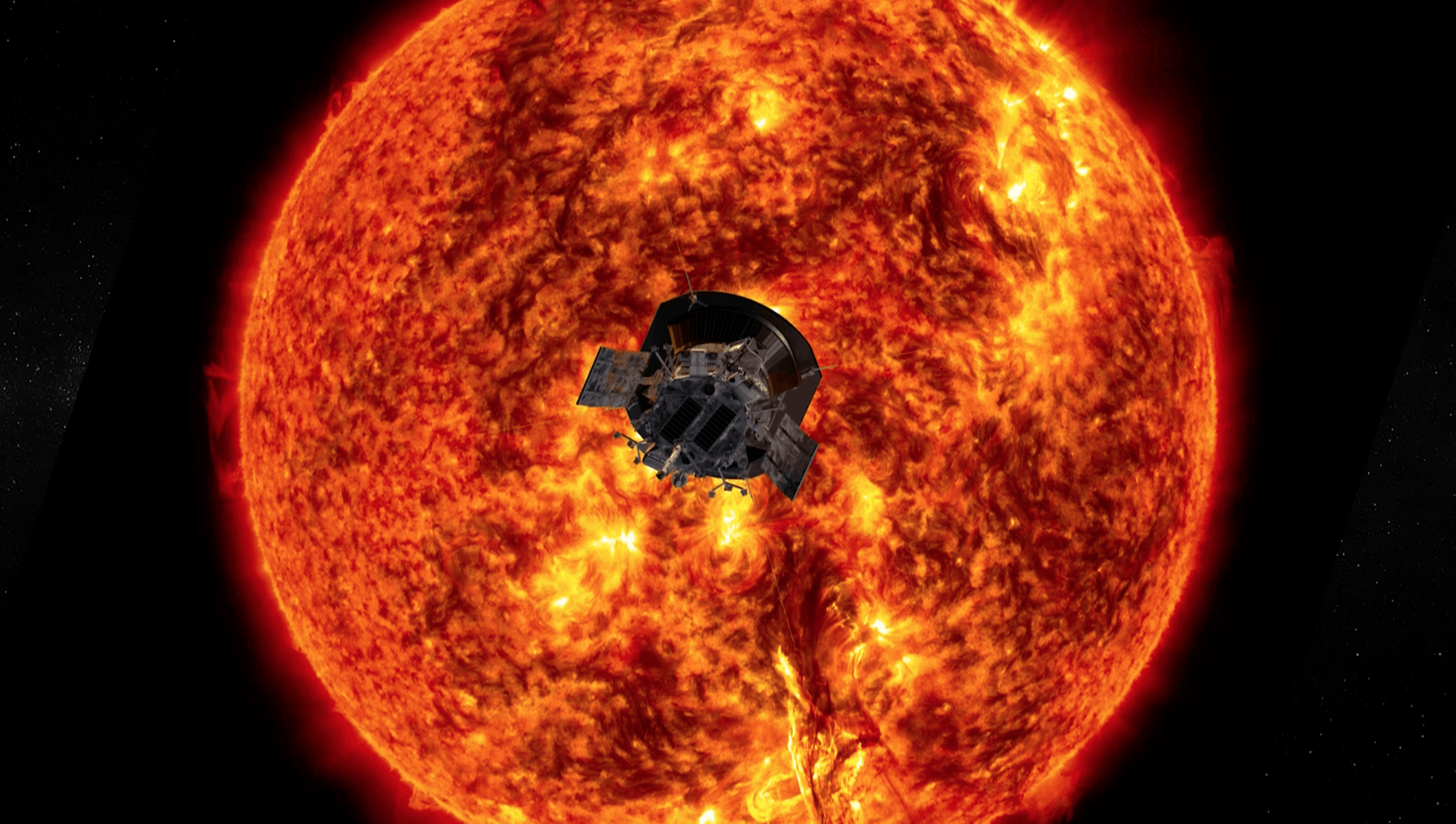
However, this also implies that our oxygen, food, and fuel reserves are infinite, and we would travel towards a correct estimation of where the Sun would be at, in around 106 years.
In a Jumbo Jet, it may take up to 19 years to get to the Sun from Earth, so regardless of our current daily traveling methods, it would take more than a lifetime to reach the Sun.
Is Earth Getting Closer to the Sun?
Since the Sun is so far away, and as discussed above, it would take more than a lifetime to reach it, would our chances of getting to the Sun increase in the distant future? Is our Earth getting closer to the Sun?
Now, getting closer to the Sun wouldn’t really help us in any way, shape, or form, probably not even scientifically. There may be other methods available to us in the future to collect data from our Sun, without the need to be near it.
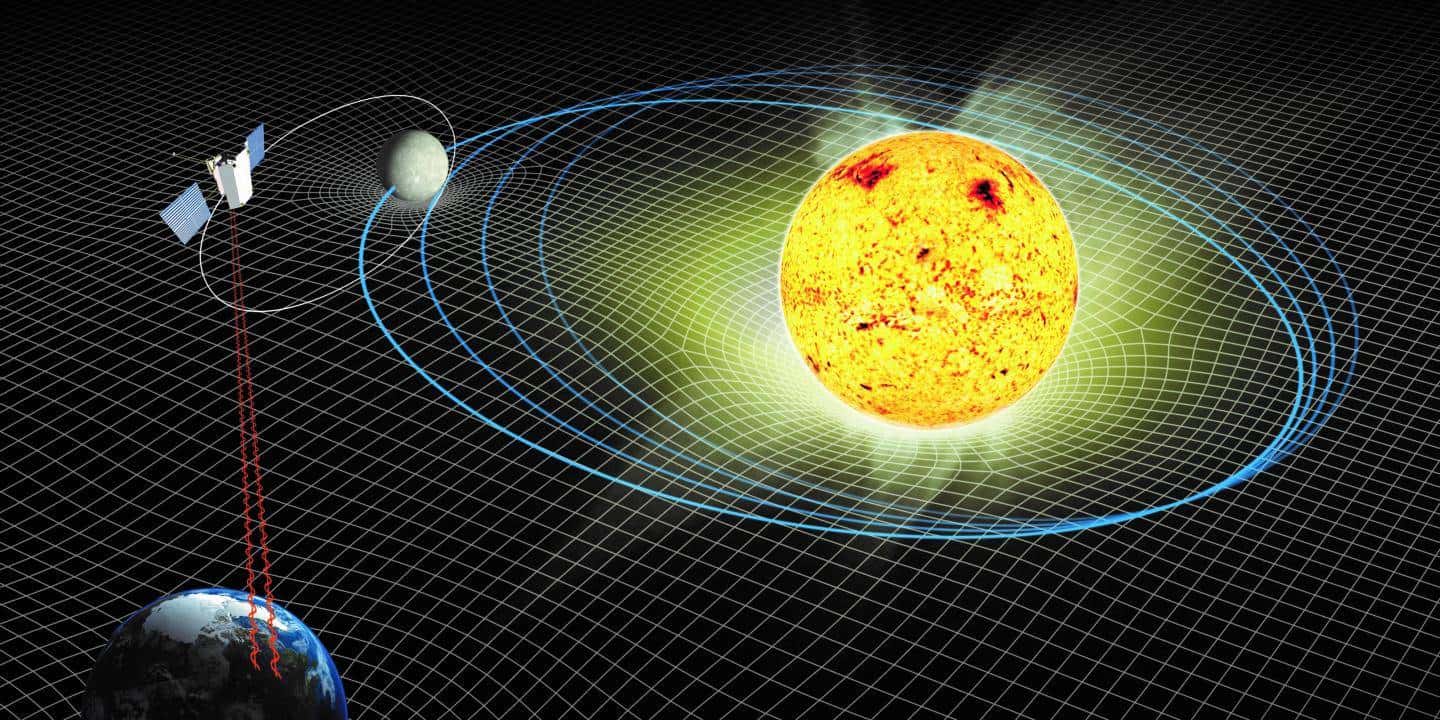
In fact, we aren’t even getting closer to our Sun. Our Earth is actually slowly moving away from the Sun. This is because our Sun, like all stars, burns its fuel.
As the Sun burns its fuel, it loses power, mass, and gravity. Since the Sun’s gravity / gravitational pull is weakening, since it loses mass, our Earth can slowly move away from it.
Our Earth is moving away from the Sun at around 15 cm every year. However, Earth will never escape from the Solar System , since the Sun will evolve in 5 billion years into a red giant star.
When this happens, Earth will be with 750,000 km / 466,028 mi farther away from the Sun; however, the Sun will also expand its radius for more than 256 times its current size (696,340 km / 432,685 mi), reaching over 178 million km / 110 million mi in radius, inevitably engulfing Earth in the end.
How Far is it From Earth to Space?
If you want to reach space from Earth, then you would have to fly straight up in the sky for around 100 km / 62 miles. This is where most scientists agree, is where our planet’s boundary ends, and suborbital space begins.
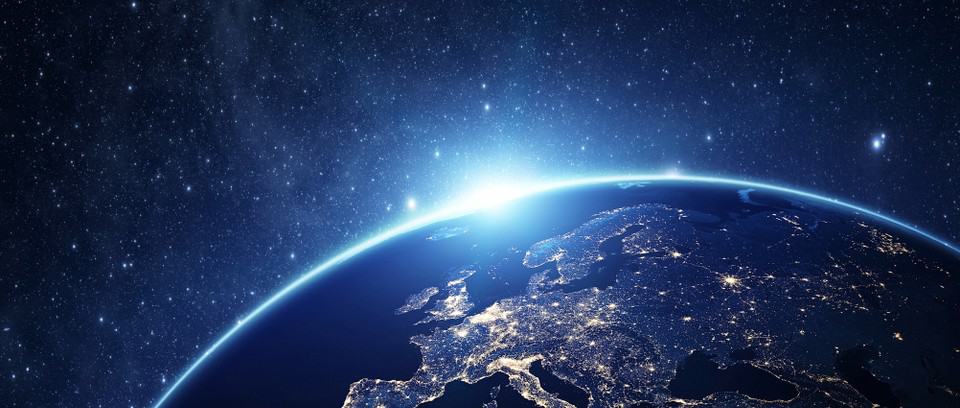
Did you know?
- Our Solar System travels through space at a speed of around 515,000 mph / 828,000 km/h.
- It takes our Solar System around 230 million years to travel around our galaxy, the Milky Way , once.
- Neptune is the farthest planet from the Sun. It is situated at around 30 AU away – that’s 30 times farther away from the Sun than our Earth.
- Though Neptune is regarded as the farthest planet away from the Sun when Pluto was categorized as a planet, it held this title. Now Pluto is considered a dwarf planet , and it is located at around 39 AU away from our Sun.
Image Sources:
- https://earthsky.org/upl/2014/01/earth-sun-lg-nasa-artist-e1476952761550.jpg
- https://scijinks.gov/review/earths-seasons/aphelion-perihelion-lrg.png
- https://www.eteknix.com/wp-content/uploads/2015/07/solar-system-800×450.jpg
- https://www.nasa.gov/sites/default/files/thumbnails/image/sweap_thumb.png
- https://regmedia.co.uk/2018/01/18/sun_earth_messenger.jpg
- https://images.immediate.co.uk/production/volatile/sites/4/2019/09/GettyImages-471296532-c-db7bc08.jpg?quality=90&resize=960%2C408
Earth-Sun Relationships
It is Earth’s relationship to the sun, and the amount of light it receives, that is responsible for the seasons and biodiversity. The amount of sun a region receives depends on the tilt of Earth’s axis and not its distance from the sun. The Northern Hemisphere experiences summer during the months of June, July, and August because it is tilted toward the sun and receives the most direct sunlight. Inversely, summer for the Southern Hemisphere takes place during the months of December, January, and February because that is when it receives the most direct sunlight.
Earth Science, Astronomy, Geology, Geography, Physical Geography

Chapter 15: Galaxies
Chapter 1 how science works.
- The Scientific Method
- Measurements
- Units and the Metric System
- Measurement Errors
- Mass, Length, and Time
- Observations and Uncertainty
- Precision and Significant Figures
- Errors and Statistics
- Scientific Notation
- Ways of Representing Data
- Mathematics
- Testing a Hypothesis
- Case Study of Life on Mars
- Systems of Knowledge
- The Culture of Science
- Computer Simulations
- Modern Scientific Research
- The Scope of Astronomy
- Astronomy as a Science
- A Scale Model of Space
- A Scale Model of Time
Chapter 2 Early Astronomy
- The Night Sky
- Motions in the Sky
- Constellations and Seasons
- Cause of the Seasons
- The Magnitude System
- Angular Size and Linear Size
- Phases of the Moon
- Dividing Time
- Solar and Lunar Calendars
- History of Astronomy
- Ancient Observatories
- Counting and Measurement
- Greek Astronomy
- Aristotle and Geocentric Cosmology
- Aristarchus and Heliocentric Cosmology
- The Dark Ages
- Arab Astronomy
- Indian Astronomy
- Chinese Astronomy
- Mayan Astronomy
Chapter 3 The Copernican Revolution
- Ptolemy and the Geocentric Model
- The Renaissance
- Copernicus and the Heliocentric Model
- Tycho Brahe
- Johannes Kepler
- Elliptical Orbits
- Kepler's Laws
- Galileo Galilei
- The Trial of Galileo
- Isaac Newton
- Newton's Law of Gravity
- The Plurality of Worlds
- The Birth of Modern Science
- Layout of the Solar System
- Scale of the Solar System
- The Idea of Space Exploration
- History of Space Exploration
- Moon Landings
- International Space Station
- Manned versus Robotic Missions
- Commercial Space Flight
- Future of Space Exploration
- Living in Space
- Moon, Mars, and Beyond
- Societies in Space
Chapter 4 Matter and Energy in the Universe
- Matter and Energy
- Rutherford and Atomic Structure
- Early Greek Physics
- Dalton and Atoms
- The Periodic Table
- Structure of the Atom
- Heat and Temperature
- Potential and Kinetic Energy
- Conservation of Energy
- Velocity of Gas Particles
- States of Matter
- Thermodynamics
- Laws of Thermodynamics
- Heat Transfer
- Thermal Radiation
- Radiation from Planets and Stars
- Internal Heat in Planets and Stars
- Periodic Processes
- Random Processes
Chapter 5 The Earth-Moon System
- Earth and Moon
- Early Estimates of Earth's Age
- How the Earth Cooled
- Ages Using Radioactivity
- Radioactive Half-Life
- Ages of the Earth and Moon
- Geological Activity
- Internal Structure of the Earth and Moon
- Basic Rock Types
- Layers of the Earth and Moon
- Origin of Water on Earth
- The Evolving Earth
- Plate Tectonics
- Geological Processes
- Impact Craters
- The Geological Timescale
- Mass Extinctions
- Evolution and the Cosmic Environment
- Earth's Atmosphere and Oceans
- Weather Circulation
- Environmental Change on Earth
- The Earth-Moon System
- Geological History of the Moon
- Tidal Forces
- Effects of Tidal Forces
- Historical Studies of the Moon
- Lunar Surface
- Ice on the Moon
- Origin of the Moon
- Humans on the Moon
Chapter 6 The Terrestrial Planets
- Studying Other Planets
- The Planets
- The Terrestrial Planets
- Mercury's Orbit
- Mercury's Surface
- Volcanism on Venus
- Venus and the Greenhouse Effect
- Tectonics on Venus
- Exploring Venus
- Mars in Myth and Legend
- Early Studies of Mars
- Mars Close-Up
- Modern Views of Mars
- Missions to Mars
- Geology of Mars
- Water on Mars
- Polar Caps of Mars
- Climate Change on Mars
- Terraforming Mars
- Life on Mars
- The Moons of Mars
- Martian Meteorites
- Comparative Planetology
- Incidence of Craters
- Counting Craters
- Counting Statistics
- Internal Heat and Geological Activity
- Magnetic Fields of the Terrestrial Planets
- Mountains and Rifts
- Radar Studies of Planetary Surfaces
- Laser Ranging and Altimetry
- Gravity and Atmospheres
- Normal Atmospheric Composition
- The Significance of Oxygen
Chapter 7 The Giant Planets and Their Moons
- The Gas Giant Planets
- Atmospheres of the Gas Giant Planets
- Clouds and Weather on Gas Giant Planets
- Internal Structure of the Gas Giant Planets
- Thermal Radiation from Gas Giant Planets
- Life on Gas Giant Planets?
- Why Giant Planets are Giant
- Ring Systems of the Giant Planets
- Structure Within Ring Systems
- The Origin of Ring Particles
- The Roche Limit
- Resonance and Harmonics
- Tidal Forces in the Solar System
- Moons of Gas Giant Planets
- Geology of Large Moons
- The Voyager Missions
- Jupiter's Galilean Moons
- Jupiter's Ganymede
- Jupiter's Europa
- Jupiter's Callisto
- Jupiter's Io
- Volcanoes on Io
- Cassini Mission to Saturn
- Saturn's Titan
- Saturn's Enceladus
- Discovery of Uranus and Neptune
- Uranus' Miranda
- Neptune's Triton
- The Discovery of Pluto
- Pluto as a Dwarf Planet
- Dwarf Planets
Chapter 8 Interplanetary Bodies
- Interplanetary Bodies
- Early Observations of Comets
- Structure of the Comet Nucleus
- Comet Chemistry
- Oort Cloud and Kuiper Belt
- Kuiper Belt
- Comet Orbits
- Life Story of Comets
- The Largest Kuiper Belt Objects
- Meteors and Meteor Showers
- Gravitational Perturbations
- Surveys for Earth Crossing Asteroids
- Asteroid Shapes
- Composition of Asteroids
- Introduction to Meteorites
- Origin of Meteorites
- Types of Meteorites
- The Tunguska Event
- The Threat from Space
- Probability and Impacts
- Impact on Jupiter
- Interplanetary Opportunity
Chapter 9 Planet Formation and Exoplanets
- Formation of the Solar System
- Early History of the Solar System
- Conservation of Angular Momentum
- Angular Momentum in a Collapsing Cloud
- Helmholtz Contraction
- Safronov and Planet Formation
- Collapse of the Solar Nebula
- Why the Solar System Collapsed
- From Planetesimals to Planets
- Accretion and Solar System Bodies
- Differentiation
- Planetary Magnetic Fields
- The Origin of Satellites
- Solar System Debris and Formation
- Gradual Evolution and a Few Catastrophies
- Chaos and Determinism
- Extrasolar Planets
- Discoveries of Exoplanets
- Doppler Detection of Exoplanets
- Transit Detection of Exoplanets
- The Kepler Mission
- Direct Detection of Exoplanets
- Properties of Exoplanets
- Implications of Exoplanet Surveys
- Future Detection of Exoplanets
Chapter 10 Detecting Radiation from Space
- Observing the Universe
- Radiation and the Universe
- The Nature of Light
- The Electromagnetic Spectrum
- Properties of Waves
- Waves and Particles
- How Radiation Travels
- Properties of Electromagnetic Radiation
- The Doppler Effect
- Invisible Radiation
- Thermal Spectra
- The Quantum Theory
- The Uncertainty Principle
- Spectral Lines
- Emission Lines and Bands
- Absorption and Emission Spectra
- Kirchoff's Laws
- Astronomical Detection of Radiation
- The Telescope
- Optical Telescopes
- Optical Detectors
- Adaptive Optics
- Image Processing
- Digital Information
- Radio Telescopes
- Telescopes in Space
- Hubble Space Telescope
- Interferometry
- Collecting Area and Resolution
- Frontier Observatories
Chapter 11 Our Sun: The Nearest Star
- The Nearest Star
- Properties of the Sun
- Kelvin and the Sun's Age
- The Sun's Composition
- Energy From Atomic Nuclei
- Mass-Energy Conversion
- Examples of Mass-Energy Conversion
- Energy From Nuclear Fission
- Energy From Nuclear Fusion
- Nuclear Reactions in the Sun
- The Sun's Interior
- Energy Flow in the Sun
- Collisions and Opacity
- Solar Neutrinos
- Solar Oscillations
- The Sun's Atmosphere
- Solar Chromosphere and Corona
- The Solar Cycle
- The Solar Wind
- Effects of the Sun on the Earth
- Cosmic Energy Sources
Chapter 12 Properties of Stars
- Star Properties
- The Distance to Stars
- Apparent Brightness
- Absolute Brightness
- Measuring Star Distances
- Stellar Parallax
- Spectra of Stars
- Spectral Classification
- Temperature and Spectral Class
- Stellar Composition
- Stellar Motion
- Stellar Luminosity
- The Size of Stars
- Stefan-Boltzmann Law
- Stellar Mass
- Hydrostatic Equilibrium
- Stellar Classification
- The Hertzsprung-Russell Diagram
- Volume and Brightness Selected Samples
- Stars of Different Sizes
- Understanding the Main Sequence
- Stellar Structure
- Stellar Evolution
Chapter 13 Star Birth and Death
- Star Birth and Death
- Understanding Star Birth and Death
- Cosmic Abundance of Elements
- Star Formation
- Molecular Clouds
- Young Stars
- T Tauri Stars
- Mass Limits for Stars
- Brown Dwarfs
- Young Star Clusters
- Cauldron of the Elements
- Main Sequence Stars
- Nuclear Reactions in Main Sequence Stars
- Main Sequence Lifetimes
- Evolved Stars
- Cycles of Star Life and Death
- The Creation of Heavy Elements
- Horizontal Branch and Asymptotic Giant Branch Stars
- Variable Stars
- Magnetic Stars
- Stellar Mass Loss
- White Dwarfs
- Seeing the Death of a Star
- Supernova 1987A
- Neutron Stars and Pulsars
- Special Theory of Relativity
- General Theory of Relativity
- Black Holes
- Properties of Black Holes
Chapter 14 The Milky Way
- The Distribution of Stars in Space
- Stellar Companions
- Binary Star Systems
- Binary and Multiple Stars
- Mass Transfer in Binaries
- Binaries and Stellar Mass
- Nova and Supernova
- Exotic Binary Systems
- Gamma Ray Bursts
- How Multiple Stars Form
- Environments of Stars
- The Interstellar Medium
- Effects of Interstellar Material on Starlight
- Structure of the Interstellar Medium
- Dust Extinction and Reddening
- Groups of Stars
- Open Star Clusters
- Globular Star Clusters
- Distances to Groups of Stars
- Ages of Groups of Stars
- Layout of the Milky Way
- William Herschel
- Isotropy and Anisotropy
- Mapping the Milky Way
Chapter 15 Galaxies
- The Milky Way Galaxy
- Mapping the Galaxy Disk
- Spiral Structure in Galaxies
- Mass of the Milky Way
- Dark Matter in the Milky Way
- Galaxy Mass
- The Galactic Center
- Black Hole in the Galactic Center
- Stellar Populations
- Formation of the Milky Way
- The Shapley-Curtis Debate
- Edwin Hubble
- Distances to Galaxies
- Classifying Galaxies
- Spiral Galaxies
- Elliptical Galaxies
- Lenticular Galaxies
- Dwarf and Irregular Galaxies
- Overview of Galaxy Structures
- The Local Group
Light Travel Time
- Galaxy Size and Luminosity
- Mass to Light Ratios
- Dark Matter in Galaxies
- Gravity of Many Bodies
- Galaxy Evolution
- Galaxy Interactions
- Galaxy Formation
Chapter 16 The Expanding Universe
- Galaxy Redshifts
- The Expanding Universe
- Cosmological Redshifts
- The Hubble Relation
- Relating Redshift and Distance
- Galaxy Distance Indicators
- Size and Age of the Universe
- The Hubble Constant
- Large Scale Structure
- Galaxy Clustering
- Clusters of Galaxies
- Overview of Large Scale Structure
- Dark Matter on the Largest Scales
- The Most Distant Galaxies
- Black Holes in Nearby Galaxies
- Active Galaxies
- Radio Galaxies
- The Discovery of Quasars
- Types of Gravitational Lensing
- Properties of Quasars
- The Quasar Power Source
- Quasars as Probes of the Universe
- Star Formation History of the Universe
- Expansion History of the Universe
Chapter 17 Cosmology
- Early Cosmologies
- Relativity and Cosmology
- The Big Bang Model
- The Cosmological Principle
- Universal Expansion
- Cosmic Nucleosynthesis
- Cosmic Microwave Background Radiation
- Discovery of the Microwave Background Radiation
- Measuring Space Curvature
- Cosmic Evolution
- Evolution of Structure
- Mean Cosmic Density
- Critical Density
- Dark Matter and Dark Energy
- Age of the Universe
- Precision Cosmology
- The Future of the Contents of the Universe
- Fate of the Universe
- Alternatives to the Big Bang Model
- Particles and Radiation
- The Very Early Universe
- Mass and Energy in the Early Universe
- Matter and Antimatter
- The Forces of Nature
- Fine-Tuning in Cosmology
- The Anthropic Principle in Cosmology
- String Theory and Cosmology
- The Multiverse
- The Limits of Knowledge
Chapter 18 Life On Earth
- Nature of Life
- Chemistry of Life
- Molecules of Life
- The Origin of Life on Earth
- Origin of Complex Molecules
- Miller-Urey Experiment
- Pre-RNA World
- From Molecules to Cells
- Extremophiles
- Thermophiles
- Psychrophiles
- Acidophiles
- Alkaliphiles
- Radiation Resistant Biology
- Importance of Water for Life
- Hydrothermal Systems
- Silicon Versus Carbon
- DNA and Heredity
- Life as Digital Information
- Synthetic Biology
- Life in a Computer
- Natural Selection
- Tree Of Life
- Evolution and Intelligence
- Culture and Technology
- The Gaia Hypothesis
- Life and the Cosmic Environment
Chapter 19 Life in the Universe
- Life in the Universe
- Astrobiology
- Life Beyond Earth
- Sites for Life
- Complex Molecules in Space
- Life in the Solar System
- Lowell and Canals on Mars
- Implications of Life on Mars
- Extreme Environments in the Solar System
- Rare Earth Hypothesis
- Are We Alone?
- Unidentified Flying Objects or UFOs
- The Search for Extraterrestrial Intelligence
- The Drake Equation
- The History of SETI
- Recent SETI Projects
- Recognizing a Message
- The Best Way to Communicate
- The Fermi Question
- The Anthropic Principle
- Where Are They?
In the everyday world, as perceived by the human senses, light seems to travel instantaneously from one place to another. In fact, the speed of light is not infinite, and light doesn't instantly jump from your ceiling light to your desk and then to your eye. We perceive light as moving instantly because its actual velocity is almost unimaginably high; light travels at 300,000 km/s, denoted c. Using the equation Rate × Time = Distance, you can divide any distance by this number to figure out the time it would take light to cross that distance. In this way, we can see that light takes 1.5 × 10 8 / 3 × 10 5 = 500 seconds to reach Earth from the Sun, or just over 8 minutes. It takes light about 40 times longer ( Pluto at a distance of 39.4 A.U.) to leave the Solar System or about 5 hours.
The speed of light is a built-in quality of our universe . All evidence to date indicates that light has always traveled at this speed, that the speed is exact, and that the same speed is observed for all observers. The vast size of the universe, coupled with the finite (albeit large) speed of light, means that as we look out in space, we look back in time. Distant light is old light.
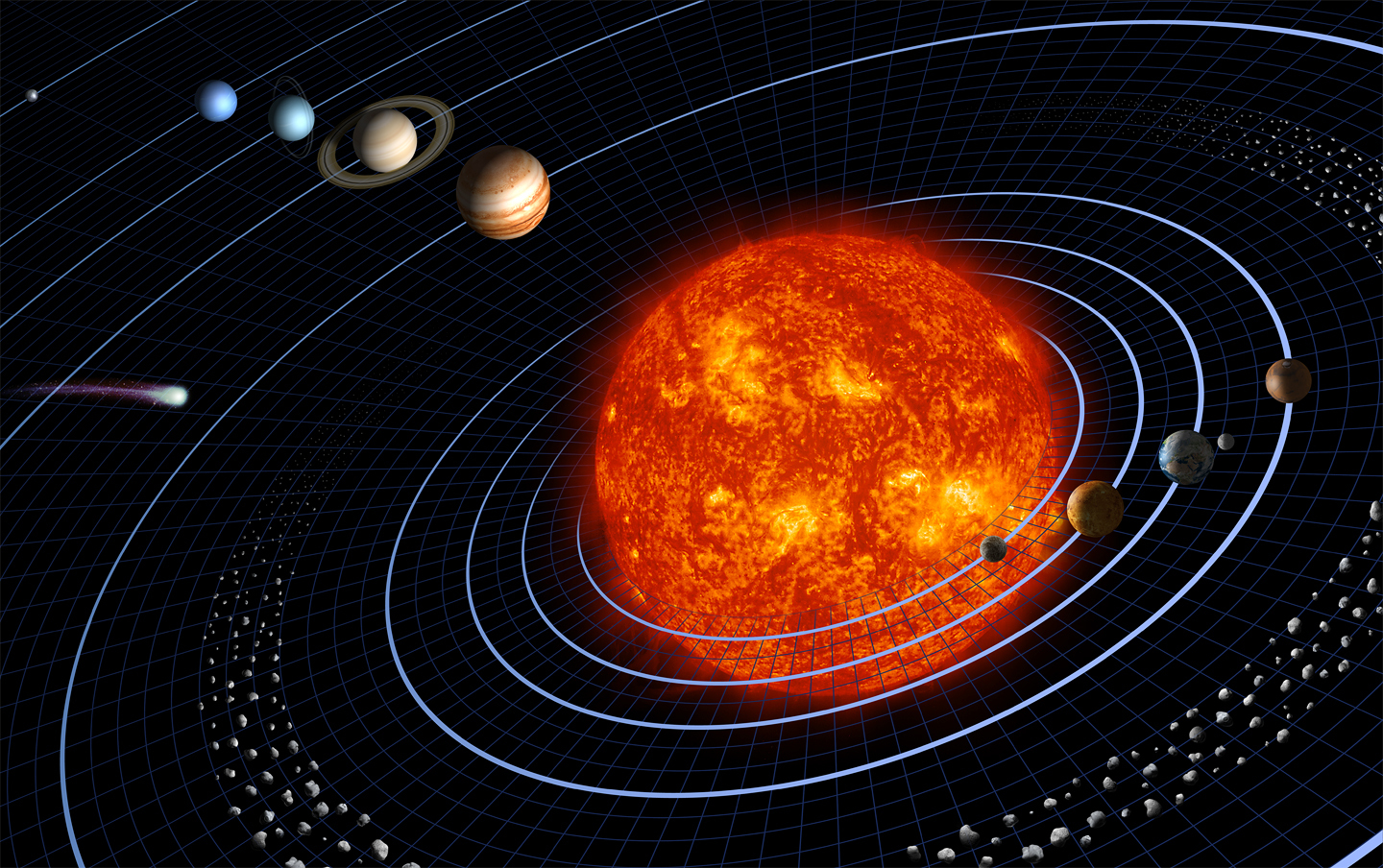
The 5 hours it takes light to travel across our Solar System may seem like a short period to cross such a large distance, but we have to think about scale. While distances within the Solar System are large to us, they are dwarfed by the distances between the stars. Considering larger regions of the Milky Way, a natural distance unit is the distance light travels in one year. This is called a light year. We can easily calculate the size of this unit by remembering that distance has the units of velocity times time. So:
D ly = vt = c x 1 year = 3 × 10 5 x (3600 × 24 × 365) = 9.5 × 10 12 km

A light year is the typical distance between stars in the neighborhood of the Sun. It is nearly 10 trillion kilometers or 6 trillion miles! The fundamental unit of distance defined by geometry is the 13 km; defined as the distance corresponding to a parallax of 1 second of arc.">parsec , equal to 3.1 × 10 13 km. This is described in more detail in the article on parallax . Geometrically, one parsec is the height of a right triangle with an angle of 1 arcsec describing its apex , and a distance of 1 AU describing its base. The units are related by a small numerical constant D ly = 3.26 D pc . So to roughly convert from parsecs to light years, multiply by 3.3.
The following list gives the distance to various points within the Milky Way and beyond, both in terms of parsecs and the light travel time in years (which is also the distance in light years or 3.3 times the distance in parsecs). To fully appreciate how isolated we are in space, remember that light is the fastest thing we know of. The fastest spacecraft can not reach 1% of the speed of light. So you would have to multiply the numbers on the right-hand side of the table by at least 100 to estimate how long it would take to send a probe through the Milky Way and into the Local Group with current technology.
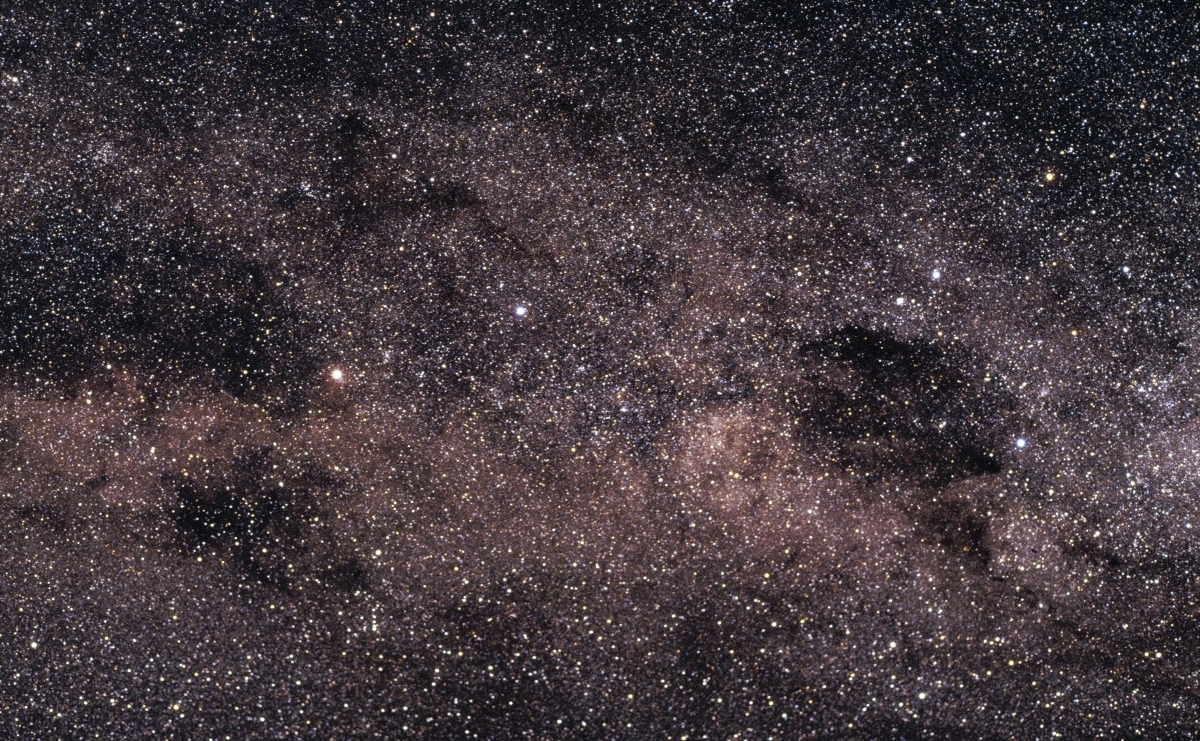
• Nearest star (α Centauri) - 1.3 pc, 4.2 years • Sirius - 2.7 pc, 8.8 years • Vega - 8.1 pc, 26 years • Hyades cluster - 42 pc, 134 years • Pleiades cluster - 125 pc, 411 years • Orion nebula - 460 pc, 1500 years • Nearest spiral arm - 1200 pc, 3900 years • Center of the 8 to 10 13 solar masses.">galaxy - 8500 pc, 29,000 years • Far edge of the galaxy - 24,000 pc, 78,000 years • Large Magellanic Cloud - 50,000 pc, 163,000 years • Andromeda galaxy (M31) - 670,000 pc, 2.2 million years
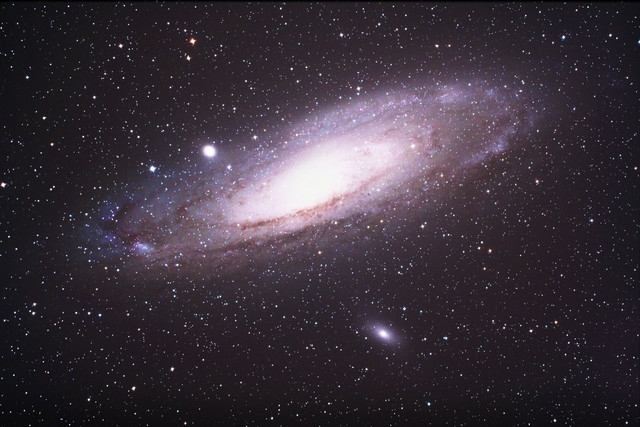
What does Andromeda look like now? Nobody knows. Since nothing travels faster than light (and this applies to all the colors of light across the electromagnetic spectrum ), there is no quicker way to send information from one place to another. We are stuck with collecting and measuring "old" light. While this seems like a limitation, scientists actually find that it turns out that light travel time is a wonderful tool. By looking further out in space we look further back in time. In this way, astronomers get to explore the earlier stages of the universe seeing firsthand (with a delay) what the early universe looked like.
The Sun's Energy: An Essential Part of the Earth System
Solar radiation, or energy produced by the Sun, is the primary energy source for most processes in the Earth system and drives Earth’s energy budget .
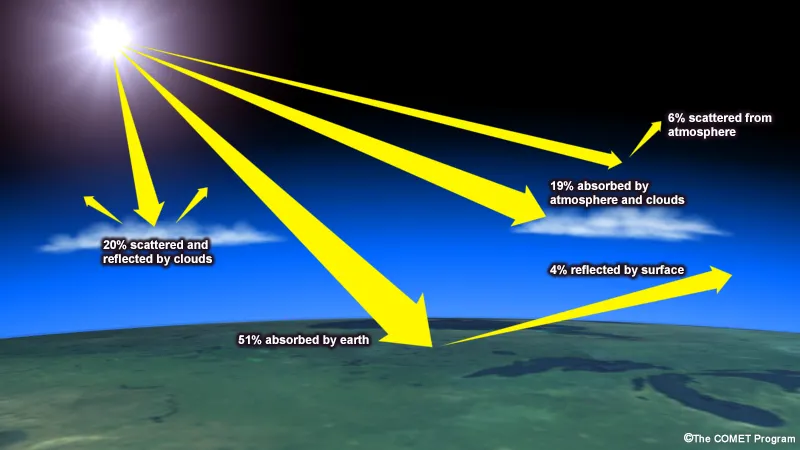
The Sun is the primary energy source for our planet’s energy budget and contributes to processes throughout Earth.
UCAR/The COMET Program
Energy from the Sun is studied as part of heliophysics, which relates to the Sun’s physics and the Sun’s connection with the solar system.
How Does Energy from the Sun Reach Earth?
It takes solar energy an average of 8 ⅓ minutes to reach Earth from the Sun. This energy travels about 149 million km (93 million miles) through space to reach the top of Earth’s atmosphere. Waves of solar energy radiate, or spread out, from the Sun and travel at the speed of light through the vacuum of space as electromagnetic radiation. The majority of the Sun’s radiation reaching Earth is in the form of visible light we can see and invisible infrared energy that we can’t see. A smaller portion of sunlight is made up of ultraviolet radiation, which is also invisible to our eyes.
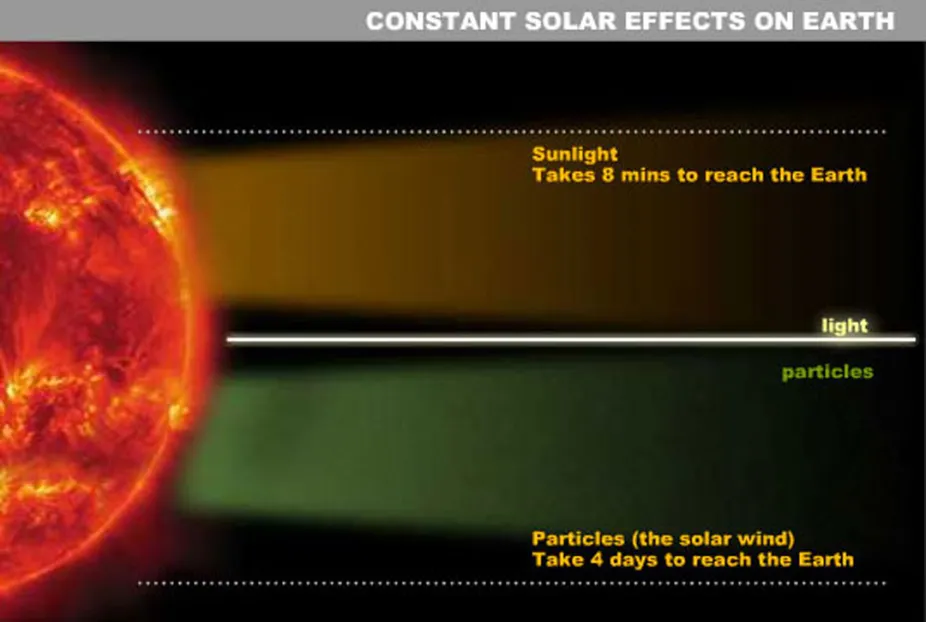
Most of the Sun’s energy reaching Earth includes visible light and infrared radiation but some is in the form of plasma and solar wind particles.
Other forms of radiation from the Sun can reach Earth as part of the solar wind , but in smaller quantities and with longer travel times. The solar wind contains plasma and particles and can also include gamma rays and x-rays resulting from solar storms or other bursts of energy from the Sun’s surface.
The Energy We Receive Depends on Distance From the Sun
The Sun’s energy we receive is electromagnetic radiation that travels through space or a medium in the form of waves or particles. The visible light we see from the Sun is similar to the visible light from a light bulb, but the Sun provides much more of it. The energy released from the Sun is mind-bogglingly large, equal to about 36 octillion (3.6 x 10 28 ) or 36 thousand trillion trillion lumens, where a lumen is a measure of the total amount of visible light. This brightness (or intensity) falls off with distance from the source by a factor of 1/d 2 , where d 2 is the square of the distance. From the surface of Mercury, depending on the planet's position in its orbit, the Sun would appear from seven to eleven times brighter as it does when viewed from Earth. By the time the Sun's energy reaches Earth's surface, it has an average brightness of about 127,000 lumens per square meter, or about 127 light bulbs if we consider that a typical light bulb produces about 650-1600 lumens of visible light.
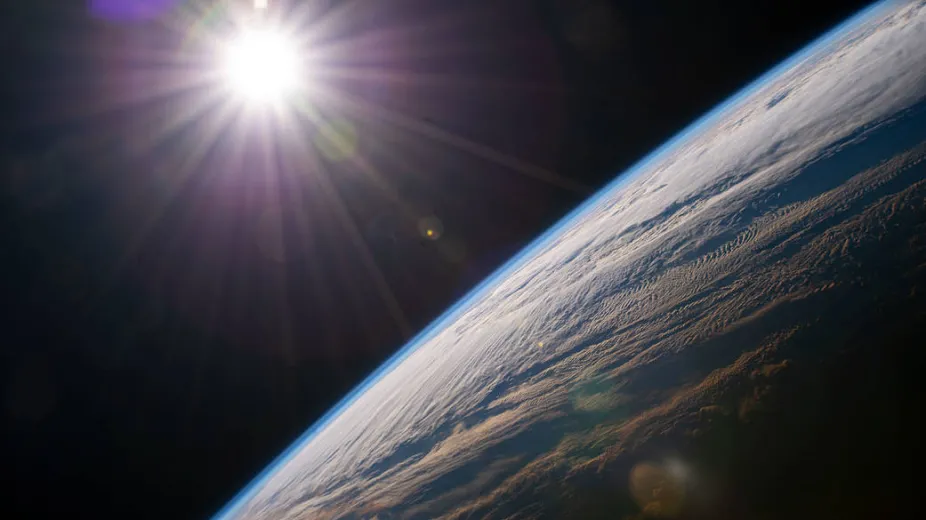
The Sun is 93 million miles from Earth, yet it still provides us with all of the energy needed to sustain life.
The Sun’s Energy is Important to Life on Earth
Energy from the Sun makes it possible for life to exist on Earth. It is responsible for photosynthesis in plants, vision in animals, and many other natural processes, such as the movements of air and water that create weather. Most plants need at least some sunlight to grow, so without light, there would be no plants, and without plants, there would not be oxygen for us to breathe. Infrared radiation from the Sun is responsible for heating the Earth’s atmosphere and surface. Without energy from the Sun, Earth would freeze. There would be no winds, ocean currents, or clouds to transport water.

Energy from the Sun enables photosynthesis in plants, which provides the oxygen we breathe and helps grow the food we eat.
Creative Commons Stephen Bowler
How do Humans Benefit from the Sun's Energy?
Throughout history, humans have used technology to harness the Sun’s energy as a source of light and heat and for growing crops. As early as 30 CE, people were constructing greenhouses to grow plants out of season. Did you know that one of the earliest greenhouses was built for the Roman emperor Tiberius using translucent sheets of mica, all so that he could eat cucumbers in any season?
Early civilizations knew that setting up shelters to capture or block sunlight could help with heating and cooling. In cold climates, they would position buildings to face southward, allowing interior spaces to gather heat and light. In warm climates, shelters might be constructed under cliffs or natural overhangs to protect the residents from the Sun’s radiation in the hottest part of the day. Using energy from the Sun effectively also helped with growing crops.

The cliff dwellings at Mesa Verde National Park in Colorado, USA, were built in the shadows of rock overhangs to help keep the structures cool in the hot desert sunlight.
Creative Commons Steven Zucker
Today, we can intentionally position windows and skylights to help heat or cool our homes through passive solar design. Solar panels can also capture energy from the Sun by gathering sunlight and converting it to electricity. As of 2023, solar power is the third largest source of renewable energy worldwide, behind hydropower and wind.
How is Energy from the Sun Harmful?

UV radiation can damage skin and cause sunburn, but simple actions such as wearing a hat and sunscreen provide essential protection from the Sun’s harmful UV rays.
Some of the Sun’s energy reaches Earth in the form ultraviolet (or UV) radiation. Fortunately, the ozone layer high in Earth’s atmosphere absorbs a lot of this UV radiation and blocks it from reaching Earth’s surface. But some UV still makes it through. UV radiation from the Sun causes sunburn and skin damage but can be blocked with clothes and sunscreen. Wearing hats and sunglasses in bright sunlight and trying to stay in the shade when possible can also help protect you from harmful UV rays. Note that it’s not realistic or advisable to avoid all exposure to sunlight, as sunlight also helps our bodies produce vitamin D, which we need to be healthy.
UV radiation can damage plants and limit photosynthesis. Scientists have found that overexposure to UV radiation reduces size, productivity, and quality in several crop species, including many varieties of rice, soybeans, winter wheat, cotton, and corn. Sometimes, UV can cause bleaching of plants, visible as damage or discoloration. Planting tender young plants in the shadow of larger plants can help protect them from UV radiation.
- Electromagnetic Spectrum
- Types of Light from the Sun
- Visible Light
- Ultraviolet Radiation
- What is Space Weather and How Does it Affect the Earth?
Related Links
- Sun's Spectrum
- NASA - Play Helios: A Game About How the Sun Makes Energy
Want a daily email of lesson plans that span all subjects and age groups?
Sunlight is way older than you think - sten odenwald.
726,214 Views
13,291 Questions Answered
Let’s Begin…
It takes light a zippy 8 minutes to reach Earth from the surface of the Sun. But how long does it take that same light to travel from the Sun’s core to its surface? Oddly enough, the answer is many thousands of years. Sten Odenwald explains why by illustrating the random walk problem.
About TED-Ed Animations
TED-Ed Animations feature the words and ideas of educators brought to life by professional animators. Are you an educator or animator interested in creating a TED-Ed Animation? Nominate yourself here »
Meet The Creators
- Educator Sten Odenwald
- Director Eduardo Sandoval
- Sound Designer Christopher Bullé-Goyri
- Narrator Addison Anderson
More from Out Of This World

The solar system is beige
Lesson duration 09:10
191,582 Views

Something weird is happening in our galaxy
Lesson duration 05:30
265,720 Views

Whoever builds something here will be rich beyond measure
Lesson duration 05:04
340,766 Views

Sound waves frozen in the fabric of the universe
Lesson duration 05:14
182,738 Views

Alexander Oparin Resources
See the additional sources and recommended reading list below, or check the physics books page for a full list. Whenever possible, I linked to books with my amazon affiliate code, and as an Amazon Associate I earn from qualifying purchases. Purchasing from these links helps to keep the website running, and I am grateful for your support!

IMAGES
VIDEO
COMMENTS
The short answer is that it takes sunlight an average of 8 minutes and 20 seconds to travel from the Sun to the Earth. If the Sun suddenly disappeared from the Universe (not that this could ...
We orbit the Sun at a distance of about 150 million km. Light moves at 300,000 kilometers/second. Divide these and you get 500 seconds, or 8 minutes and 20 seconds. This is an average number ...
It takes approximately 8-minutes for sunlight to reach Earth. The Earth orbits the sun at an average distance of 93-million miles (150-million kilometres). At this distance, there is a noticeable delay in when light emitted by the sun reaches our world. In fact, just by knowing the speed of light and the distance between the sun and Earth, you ...
Neptune: 4.35 billion km (2.7 billion miles) away from Earth on average so it takes about 4-4.5 hours for light from Neptune to reach Earth. So, the time it takes for light from each planet in our solar system to reach Earth varies depending on the distance between the two.
How long does it take for light from the Sun to reach Earth? - BBC Sky at Night Magazine. How long does light from the Sun take to reach Earth? Why when we look at the Sun, we're seeing at as it existed about 8 minutes ago!
The Atmosphere. When light travels through space from the sun, all of the frequencies of light travel in a straight line. When light hits the atmosphere, however, the photons begin to collide with gas molecules. Red, orange and yellow photons have long wavelengths and can travel right through the gas molecules.
This physics video explains how to calculate the time it takes for light to travel from the Sun to the Earth in minutes given the speed of light.More Physics...
A: The speed of light is approximately 1,079,000,000 kilometers/hour (670,600,000 miles/hour). On average, the Sun is 150 million kilometers (93 million miles) away from Earth. This means that it takes a photon of light about 8 minutes and 20 seconds to travel from the Sun to Earth. Posted on December 5, 2016 at 8:49 am. Categories: Gravity & Air.
An AU can be measured at light speed, or the time it takes for a photon of light to travel from the sun to Earth. It takes light about eight minutes and 19 seconds to reach Earth from the sun. The radius of the sun, or the distance from the very center to the outer limits, is about 700,000 kilometers (432,000 miles). That distance is about 109 ...
Explanation: Light takes 8.3 minutes to reach the Earth from the Sun 's surface. This means that the Sun is 8.3 Light-minutes away from the Earth. Answer link. 8.3 Light minutes. Light takes 8.3 minutes to reach the Earth from the Sun's surface.
On one hand, the speed of light is just a number: 299,792,458 meters per second. And on the other, it's one of the most important constants that appears in nature and defines the relationship of ...
Answer. The distance from the Earth to the Sun varies because the Earth's orbit about the Sun is elliptical.At it's closest, the distance is 91,402,000 miles and it's farthest distance it is 94,512,000 miles.This gives an average distance of 92,957,000 miles. Light travels at 186,282 miles per second. Dividing the average distance by the speed ...
A light-year is the distance light travels in one Earth year. One light-year is about 6 trillion miles (9 trillion km). That is a 6 with 12 zeros behind it! ... So, the Sun's light takes about 8.3 minutes to reach us. This means that we always see the Sun as it was about 8.3 minutes ago.
Light travels from the moon to our eyes in about 1 second, which means the moon is about 1 light-second away. Sunlight takes about 8 minutes to reach our eyes, so the sun is about 8 light minutes ...
If we were to speak in meters, then the Sun would be 150.4 billion meters away from Earth. The Earth orbits the Sun once every 365.3 days, while farther planets such as Mars, completes an orbit around the Sun in 687 days. For comparison, Mars is 1.5 AU away from the Sun, which would translate to 227.94 million km / 141.70 million mi.
Grades. 5 - 12+. It is Earth's relationship to the sun, and the amount of light it receives, that is responsible for the seasons and biodiversity. The amount of sun a region receives depends on the tilt of Earth's axis and not its distance from the sun. The Northern Hemisphere experiences summer during the months of June, July, and August ...
In this way, we can see that light takes 1.5 × 10 8 / 3 × 10 5 = 500 seconds to reach Earth from the Sun, or just over 8 minutes. It takes light about 40 times longer ( Pluto at a distance of 39.4 A.U.) to leave the Solar System or about 5 hours. The speed of light is a built-in quality of our universe.
The Sun's energy we receive is electromagnetic radiation that travels through space or a medium in the form of waves or particles. The visible light we see from the Sun is similar to the visible light from a light bulb, but the Sun provides much more of it. The energy released from the Sun is mind-bogglingly large, equal to about 36 octillion ...
It takes light a zippy 8 minutes to reach Earth from the surface of the Sun. But how long does it take that same light to travel from the Sun's core to its surface? Oddly enough, the answer is many thousands of years. Sten Odenwald explains why by illustrating the random walk problem.
The picks of spectrum of long-period oscillations of the Earth exceed its own contain peaks that match the value with an accuracy of 1% 3% with peaks of its own oscillations of the Sun.
of the Earth and so affects to our climate). The relative sunspot number is an index of the activity of the entire vis-ible disk of the Sun. The SSN is a commonly used index of solar activity, Vitinsky et al. (1986). Sunspots are temporary phenomena on the photo-sphere of the Sun that appear visibly as dark spots compared to surrounding regions.
ALEXANDER OPARIN. (1894 - 1980) Alexander Oparin. Alexander Oparin was a Russian biochemist, notable for his contributions to the theory of the origin of life on Earth, and particularly for the " primordial soup " theory of the evolution of life from carbon-based molecules. Oparin also devoted considerable effort to enzymology and helped to ...
Ronald Reagan, Speech at Moscow State University. Digital History ID 1234. Author: Ronald W. Reagan. Date:1988. Annotation: During a visit to the Soviet Union in 1988, President Ronald Reagan, a lifelong anti-communist, met with students at Moscow State University and delivered a stirring plea for democracy and individual rights.